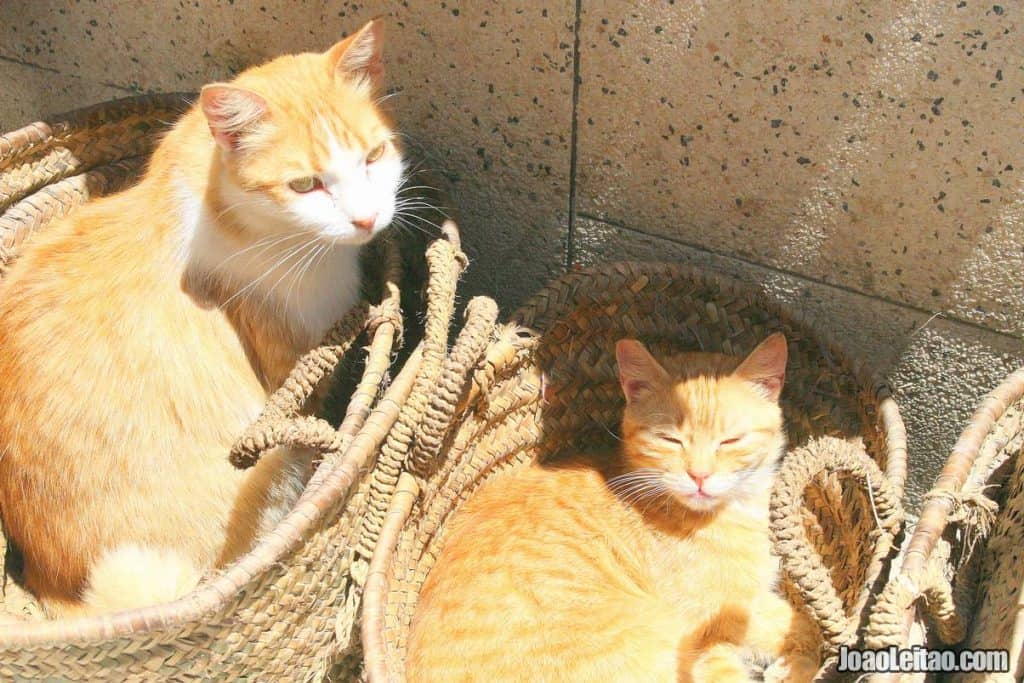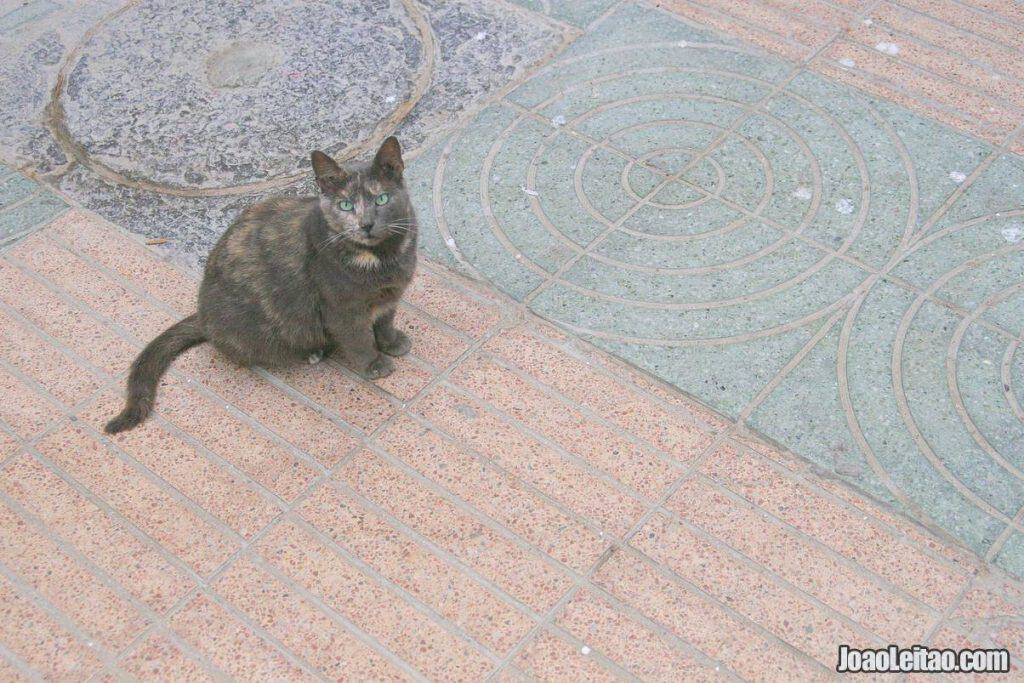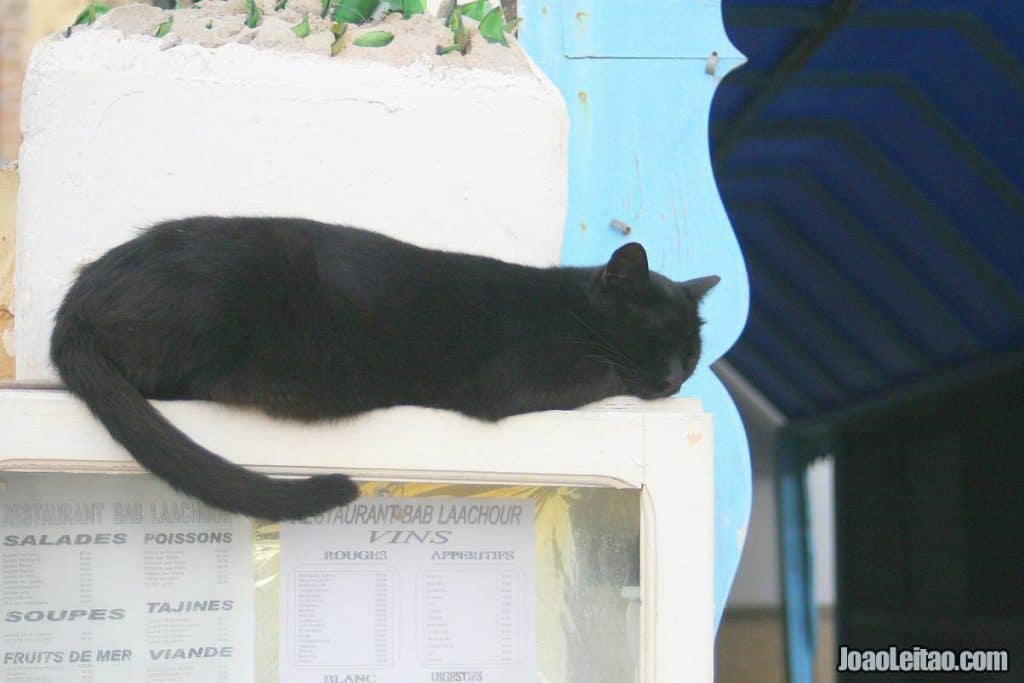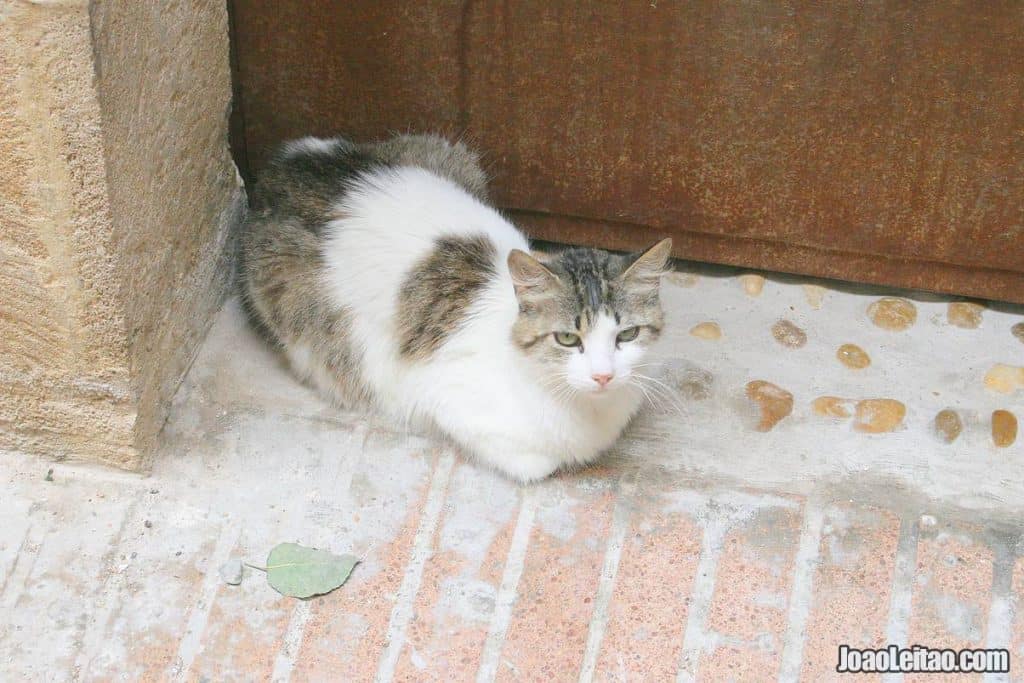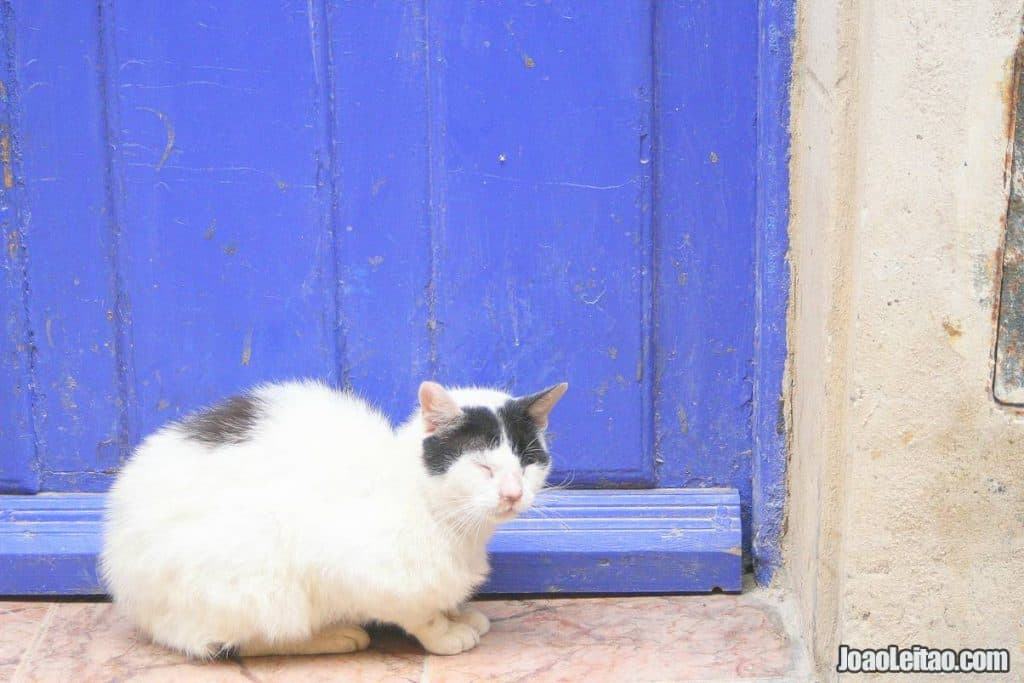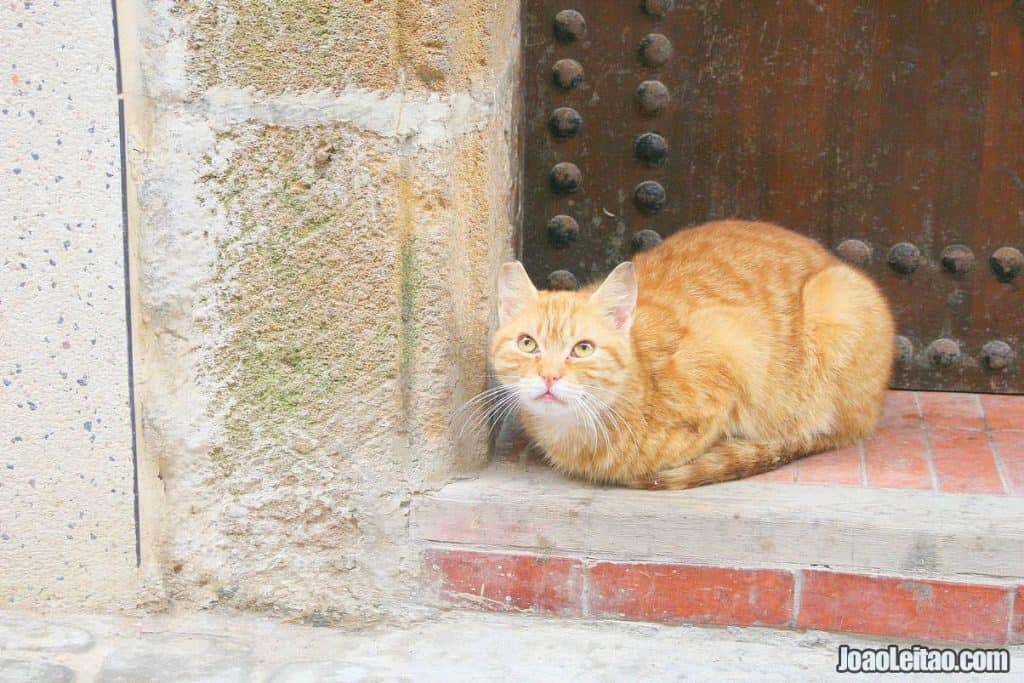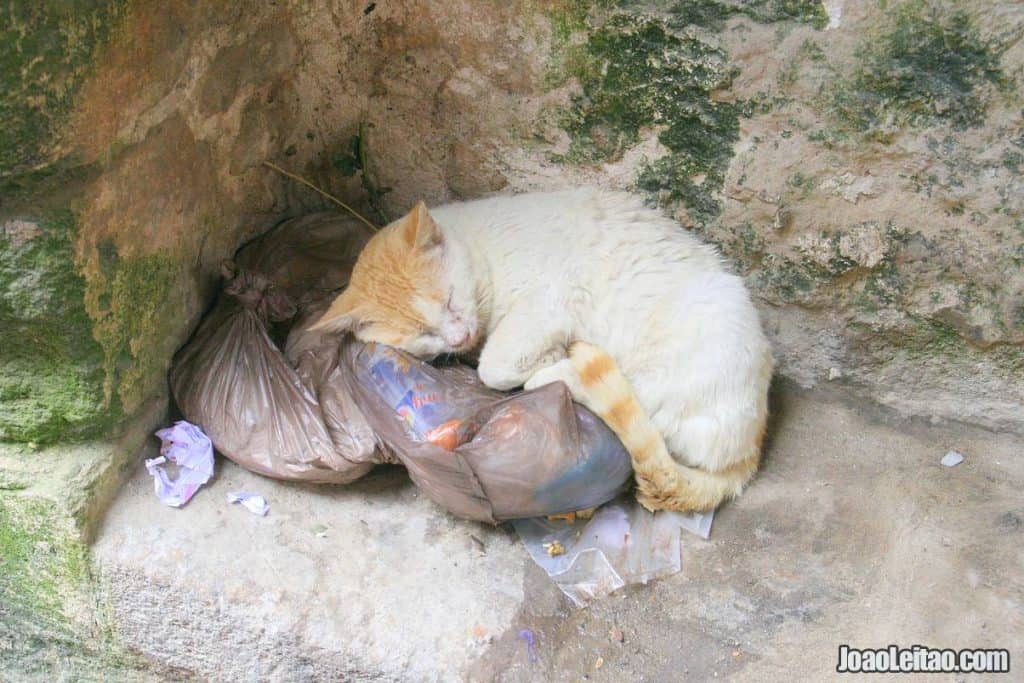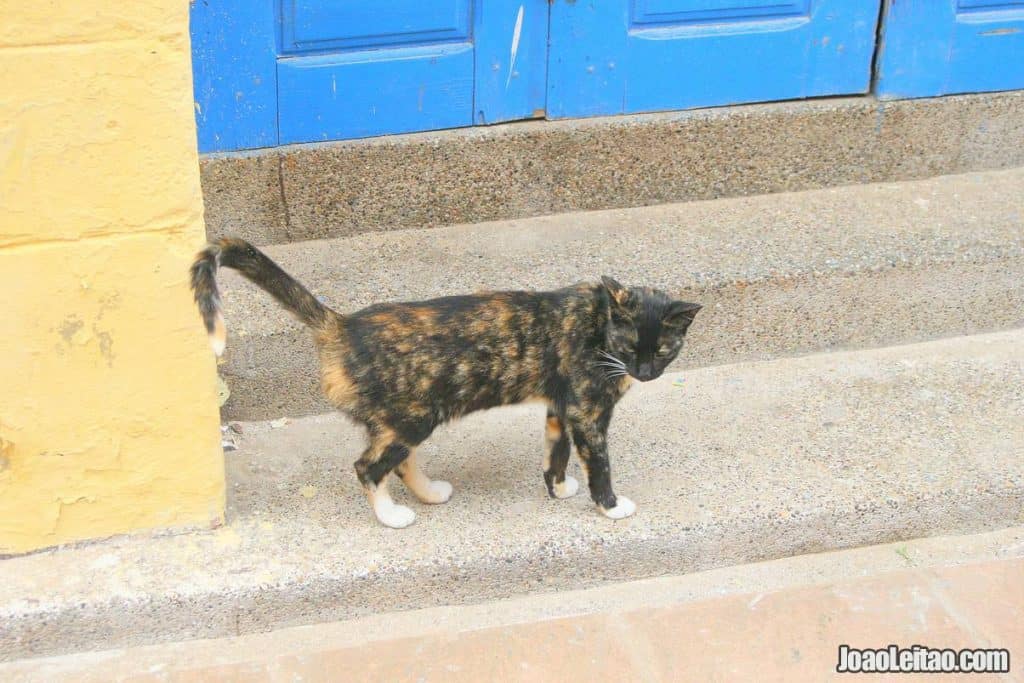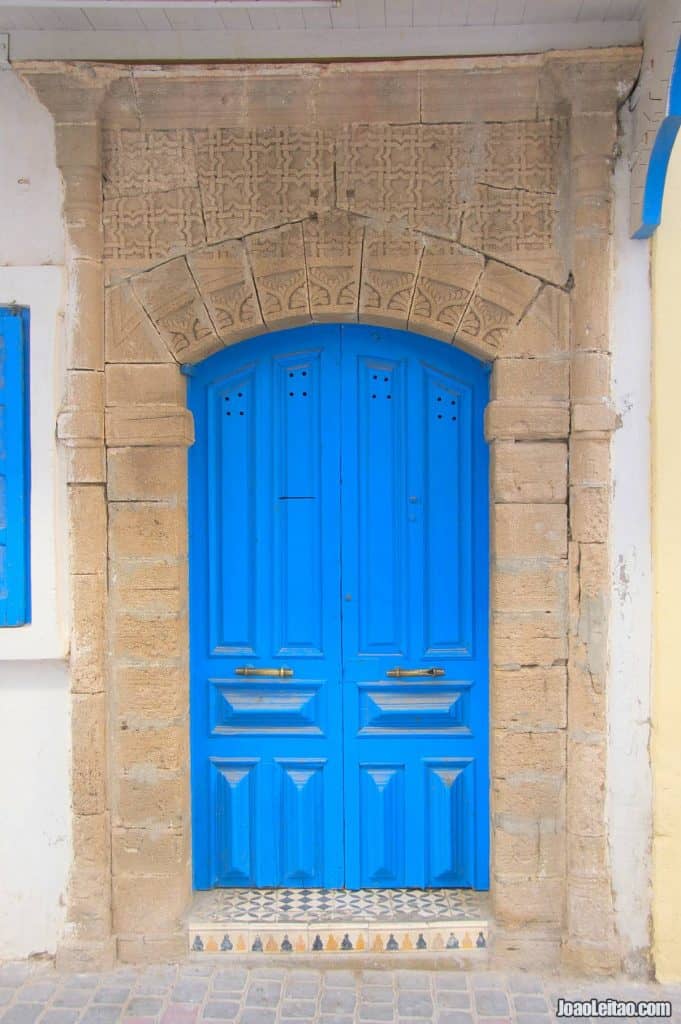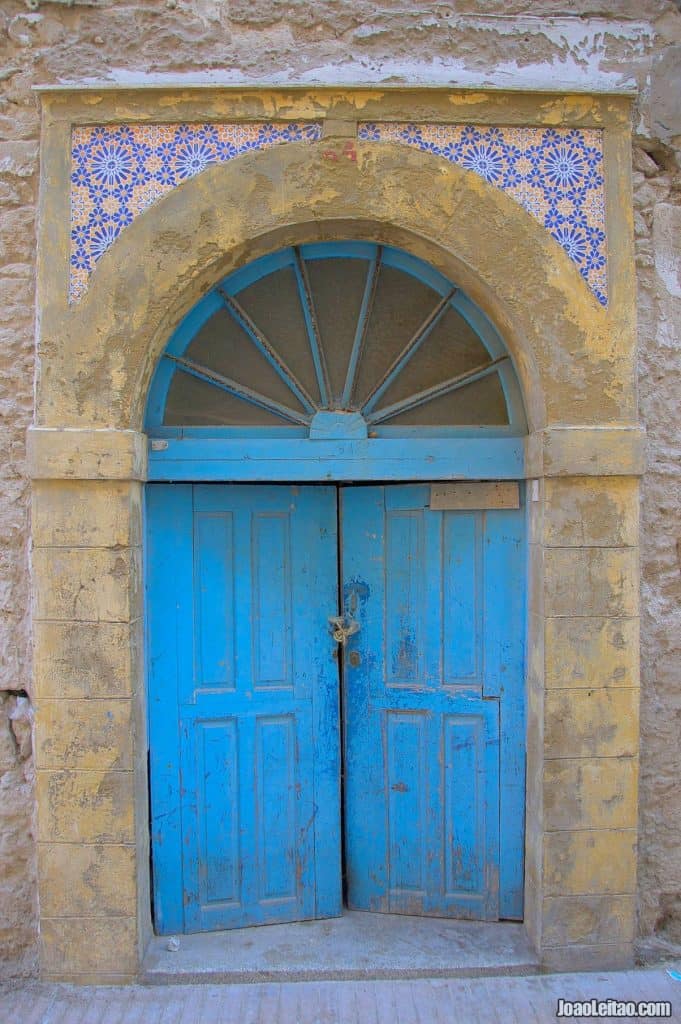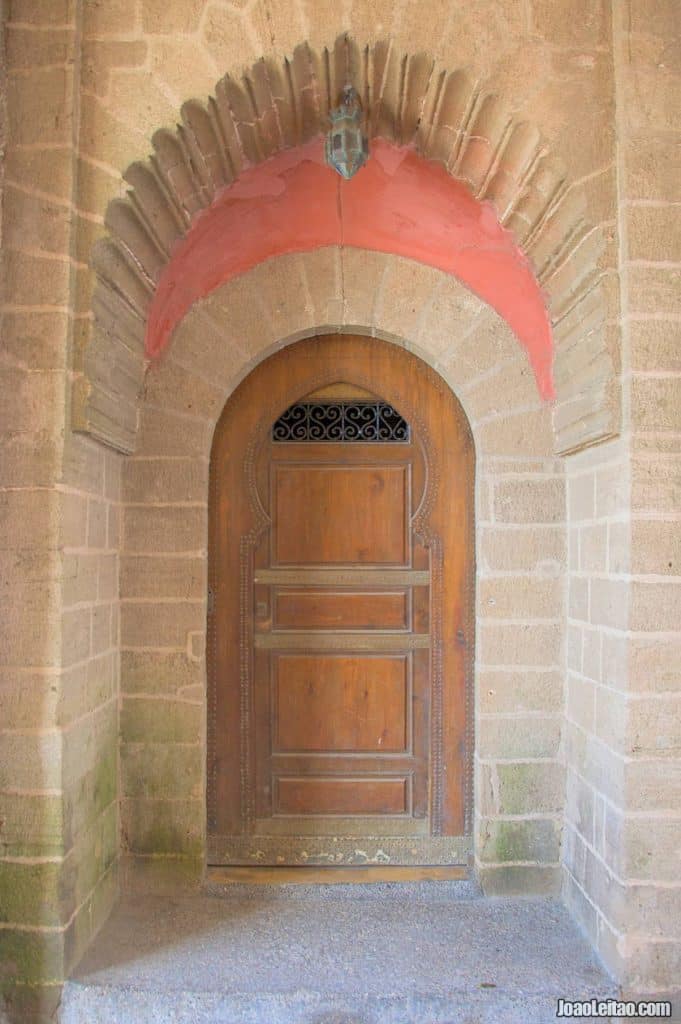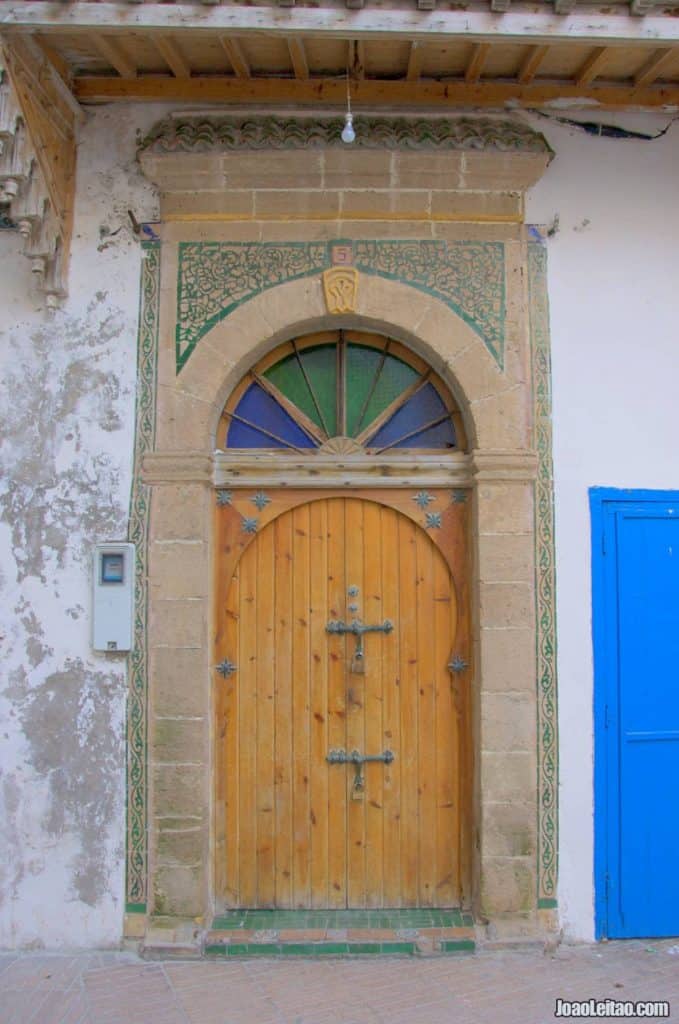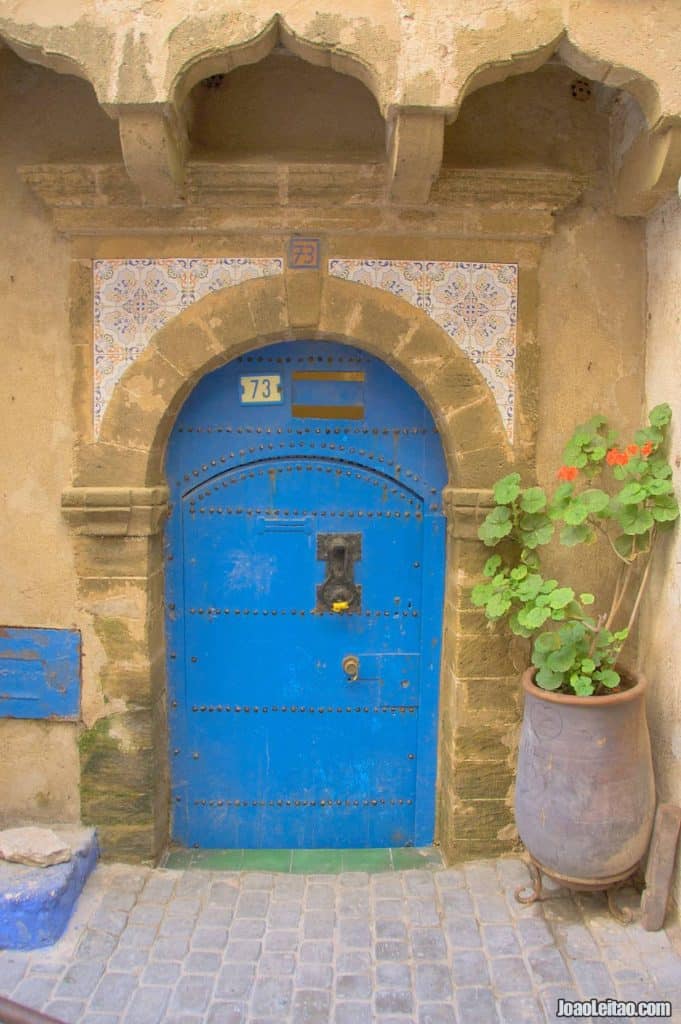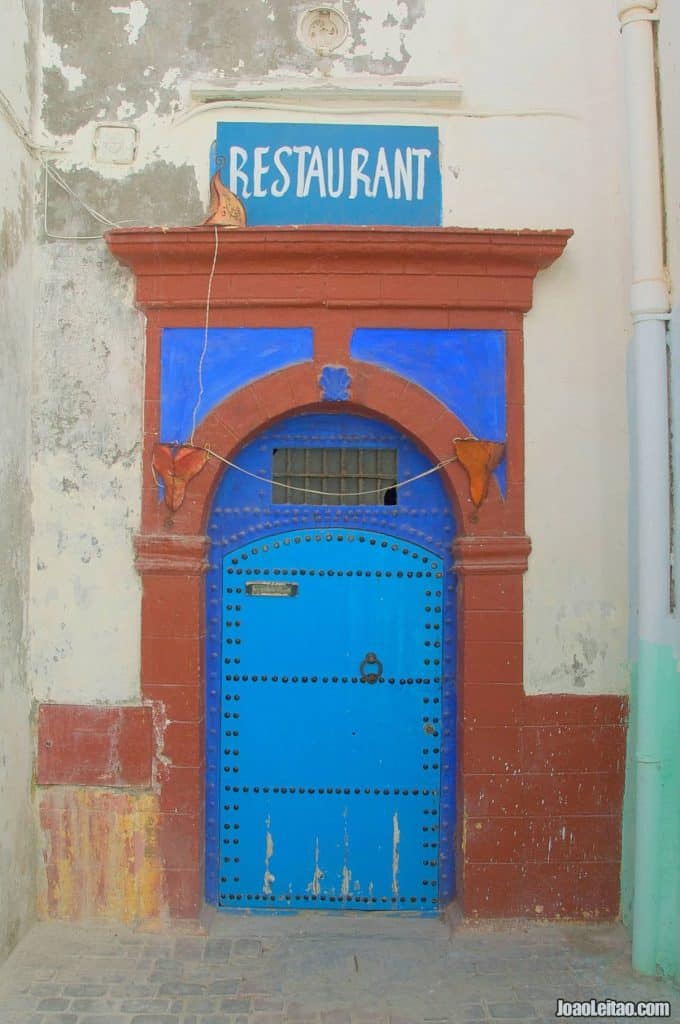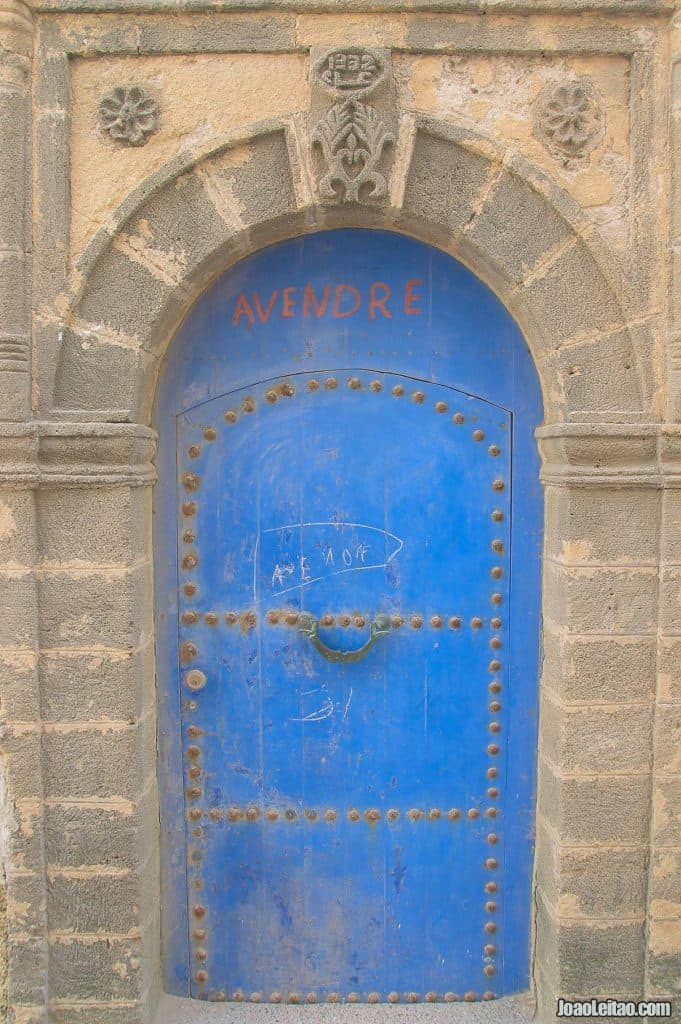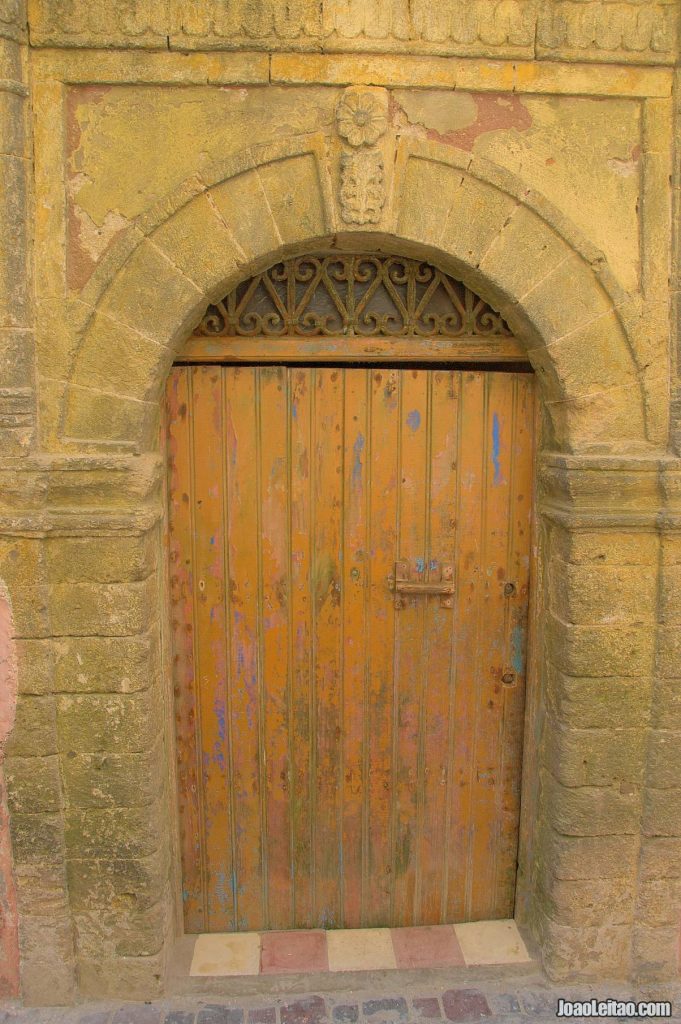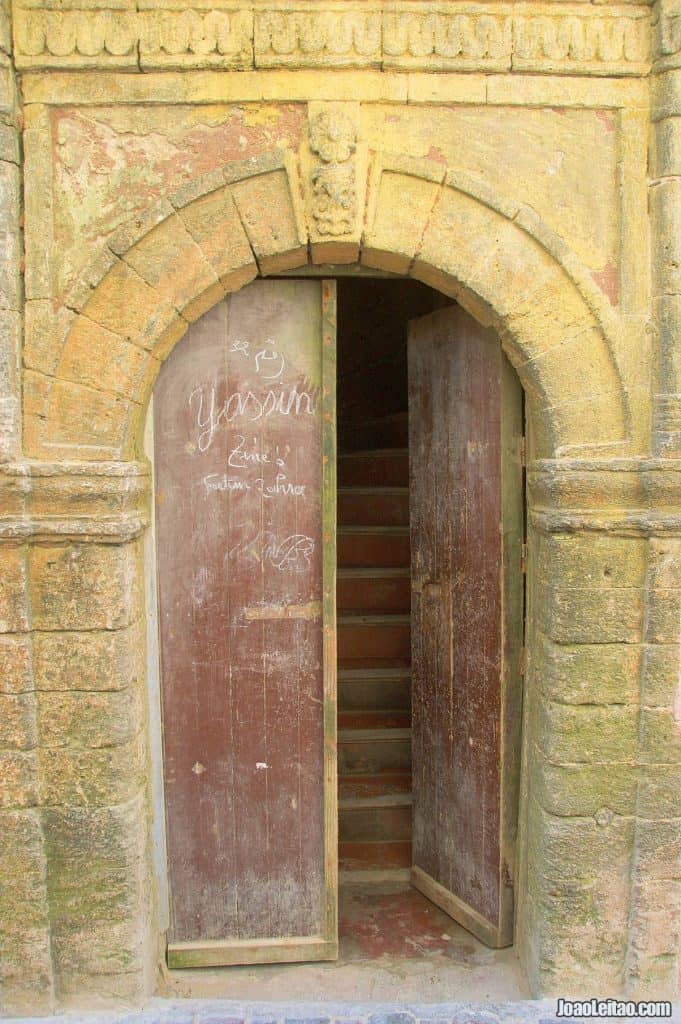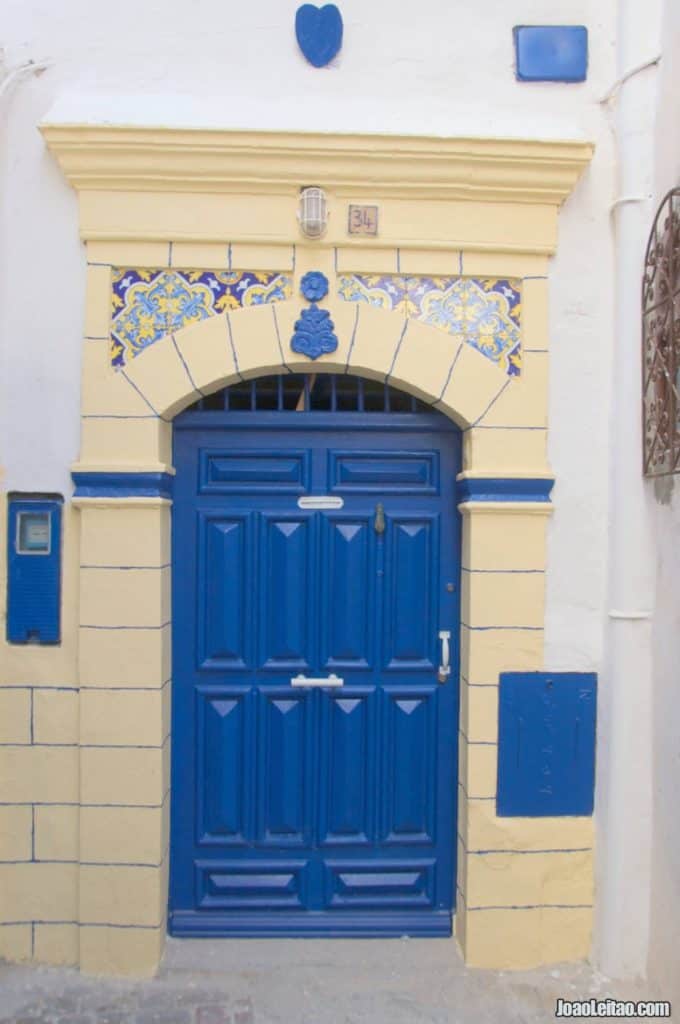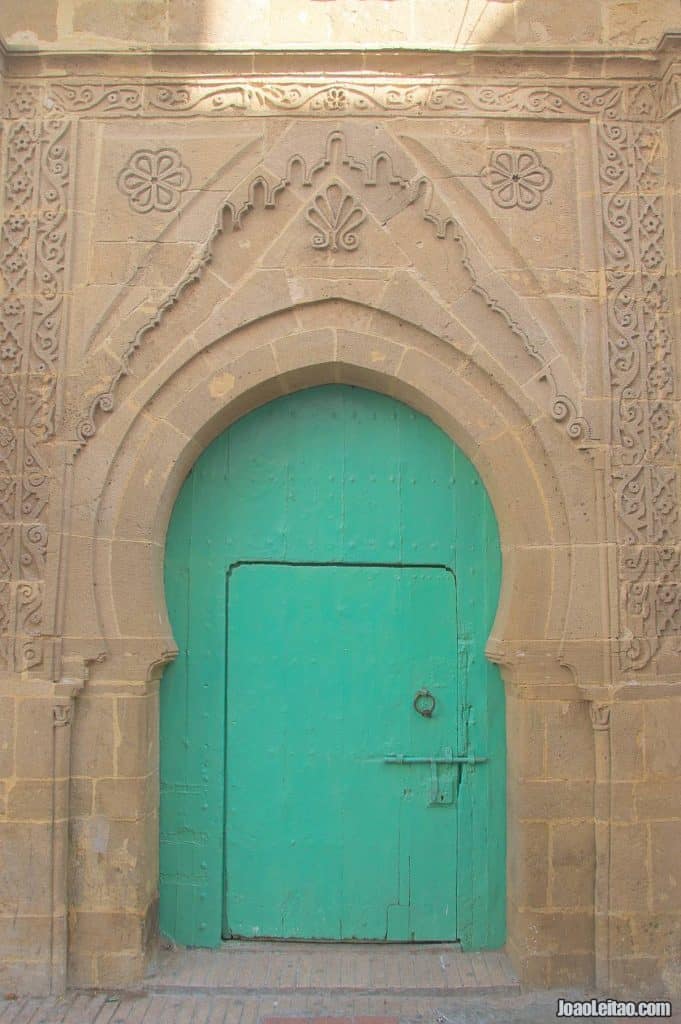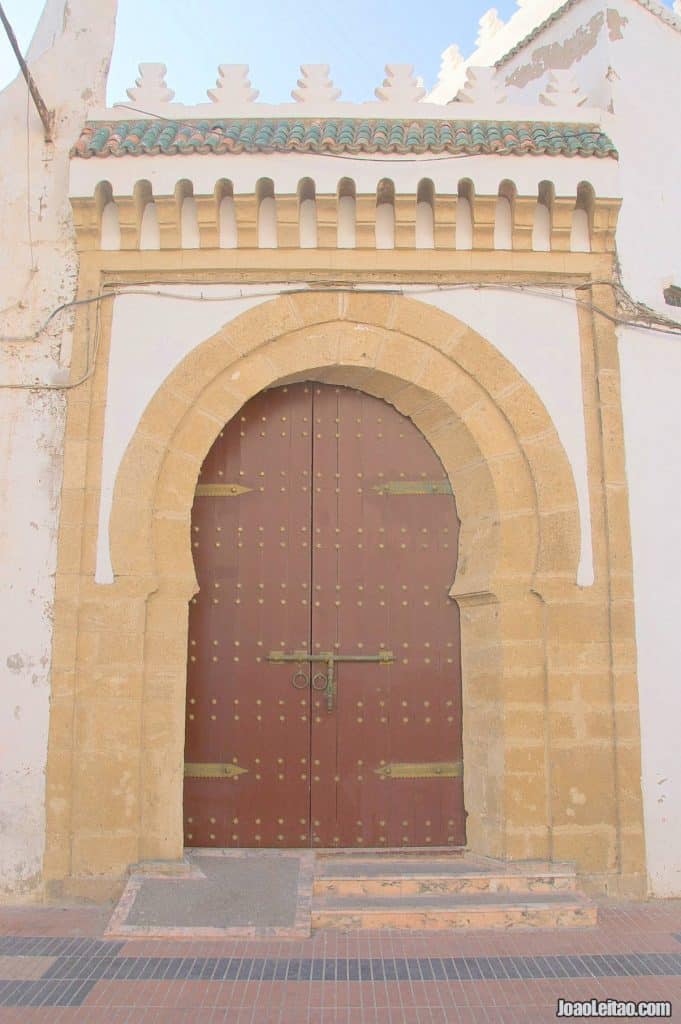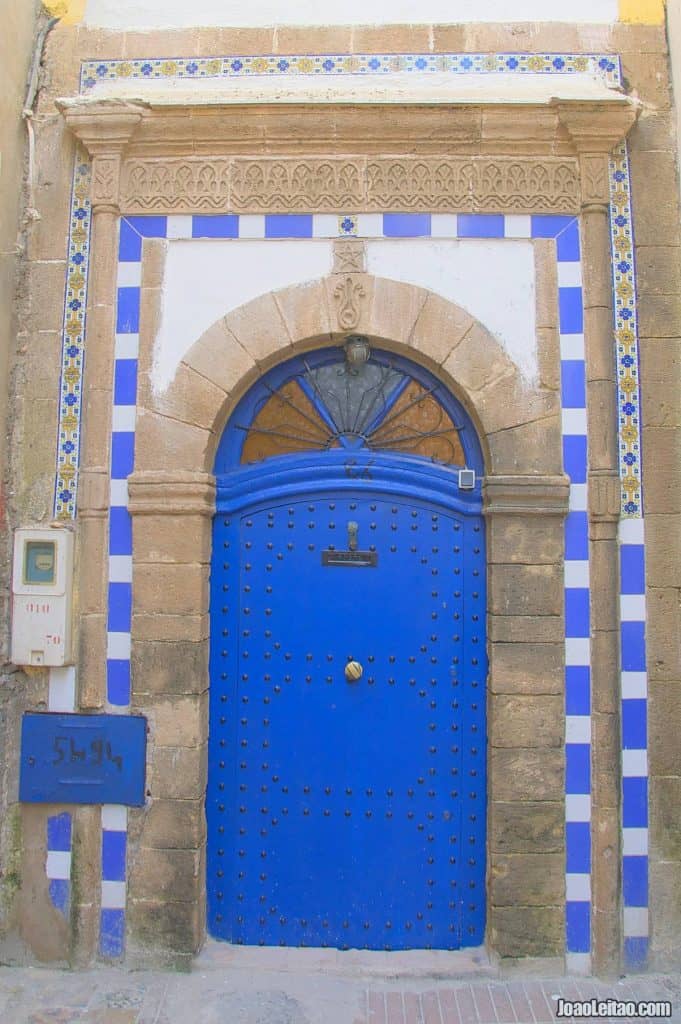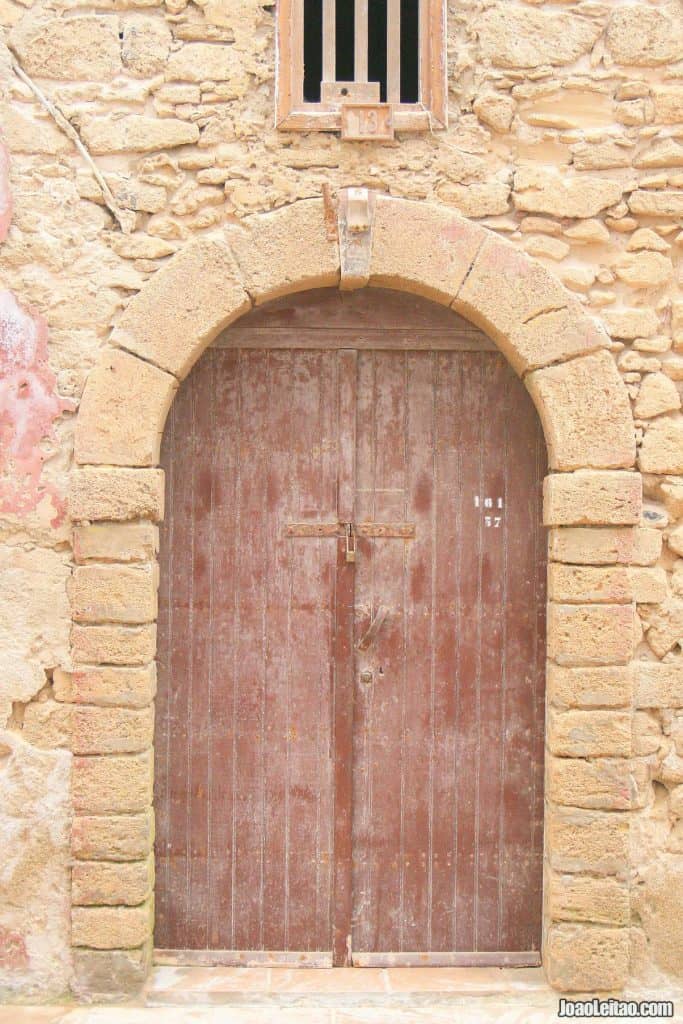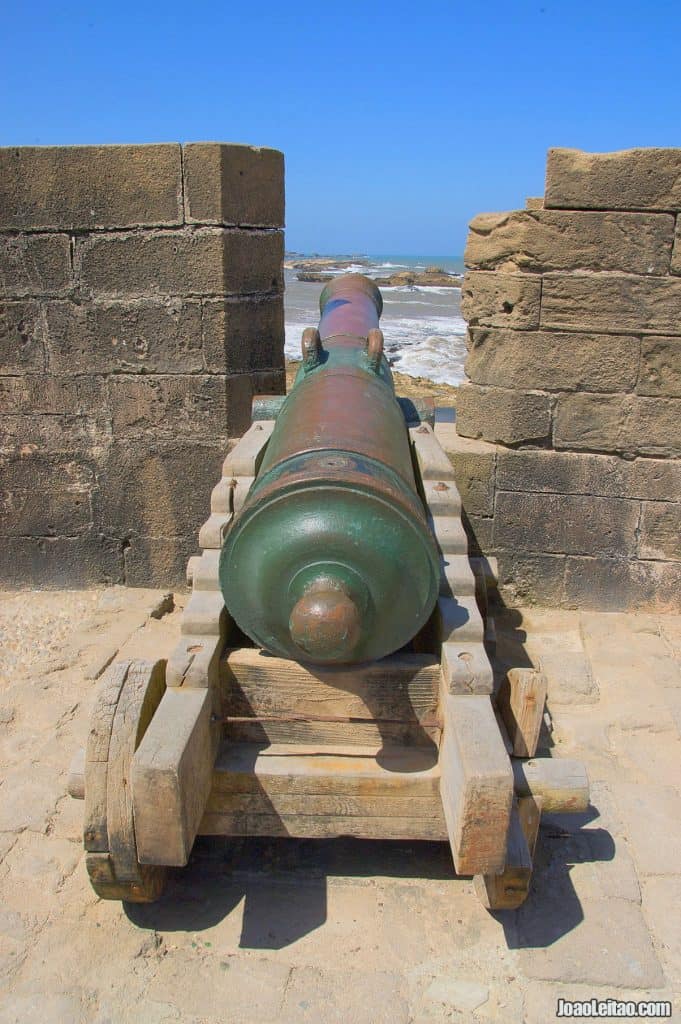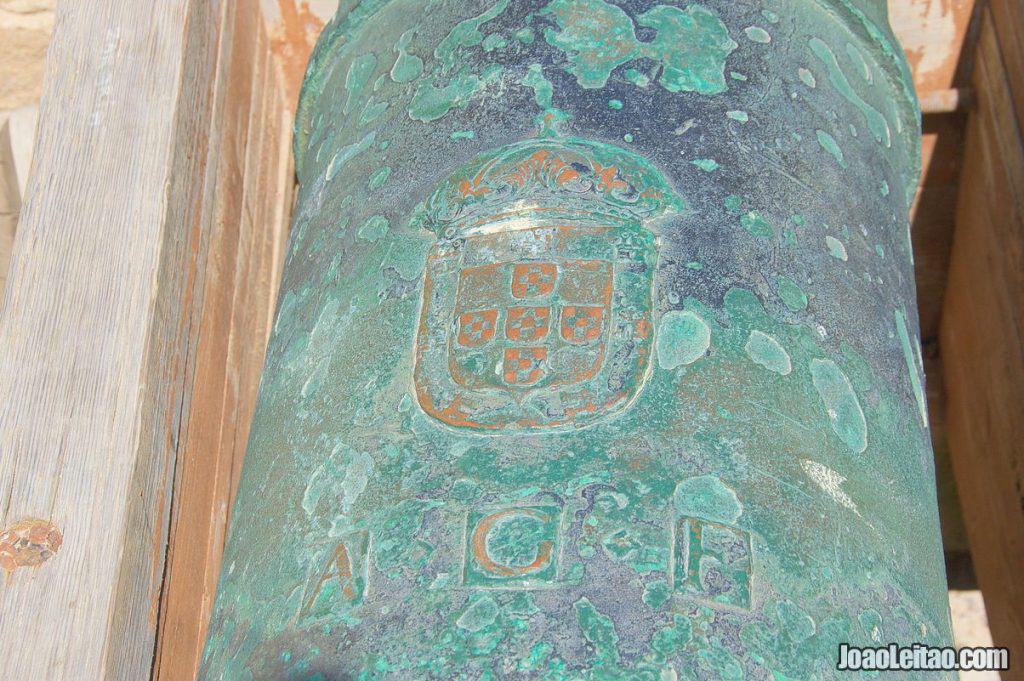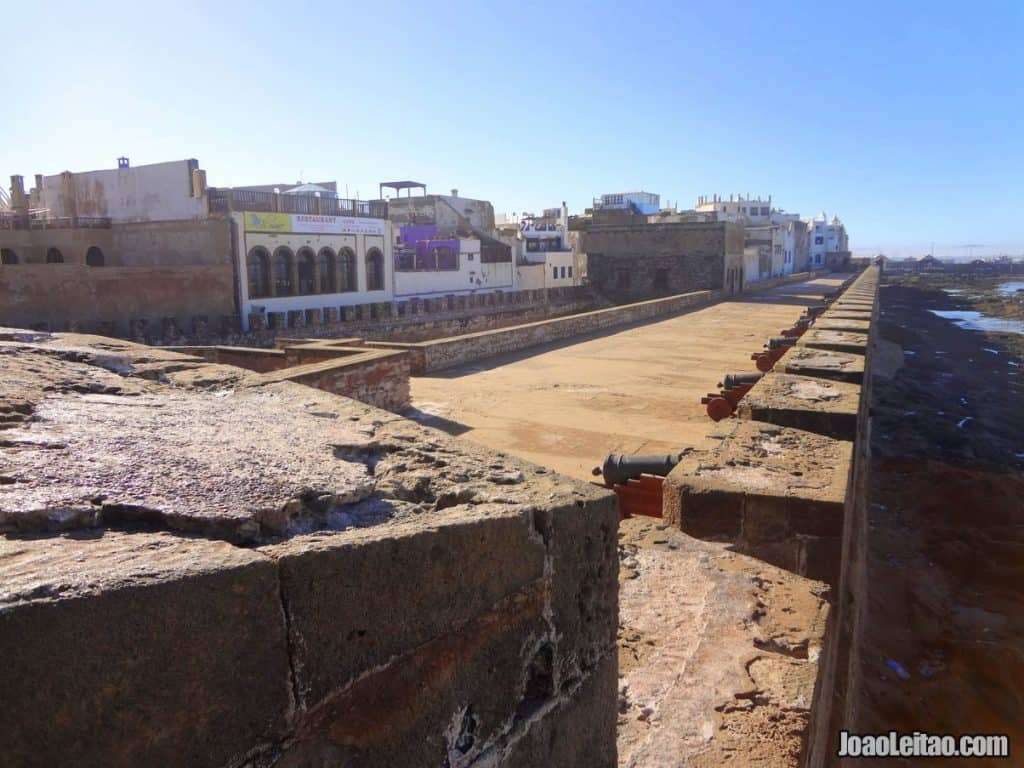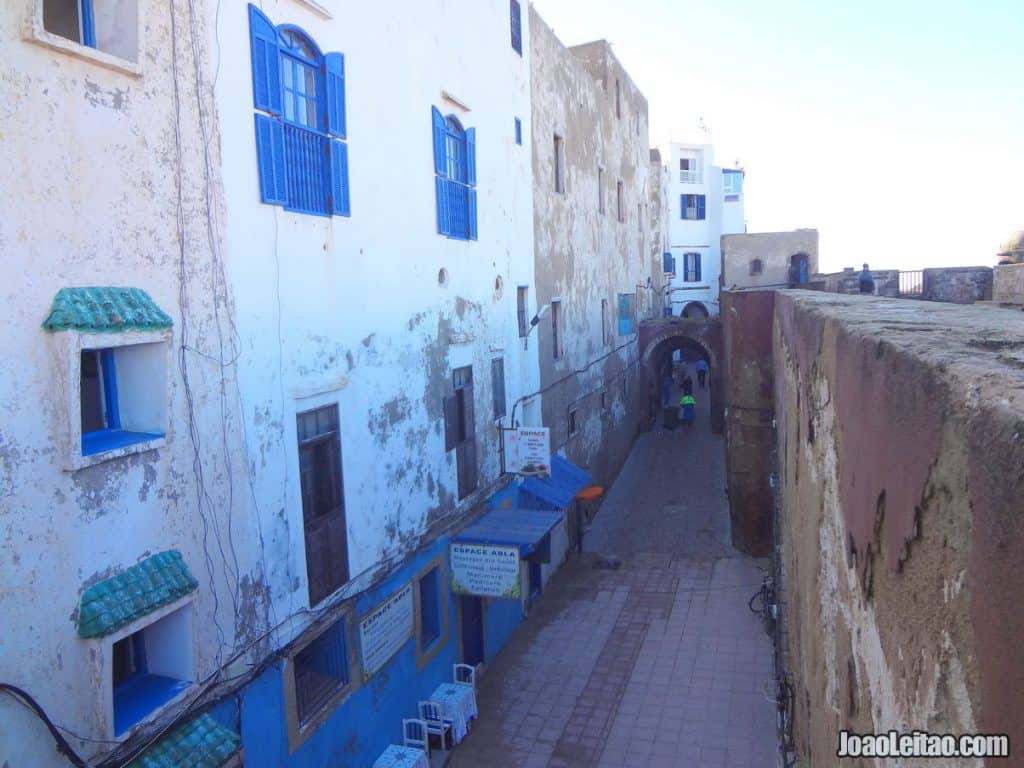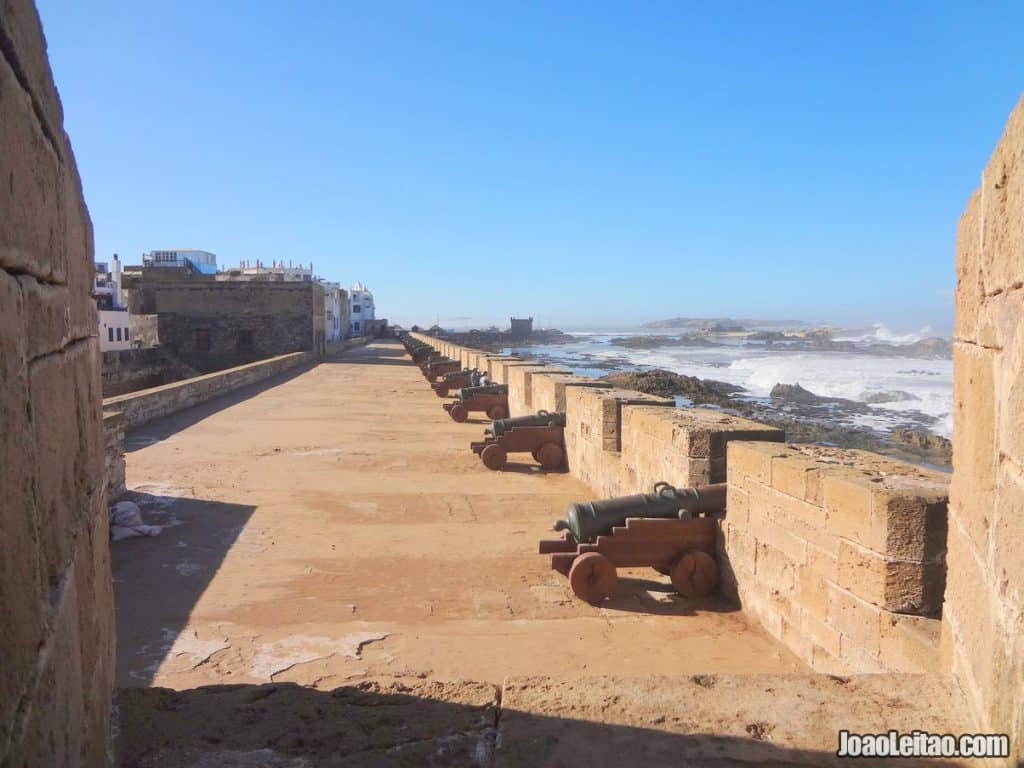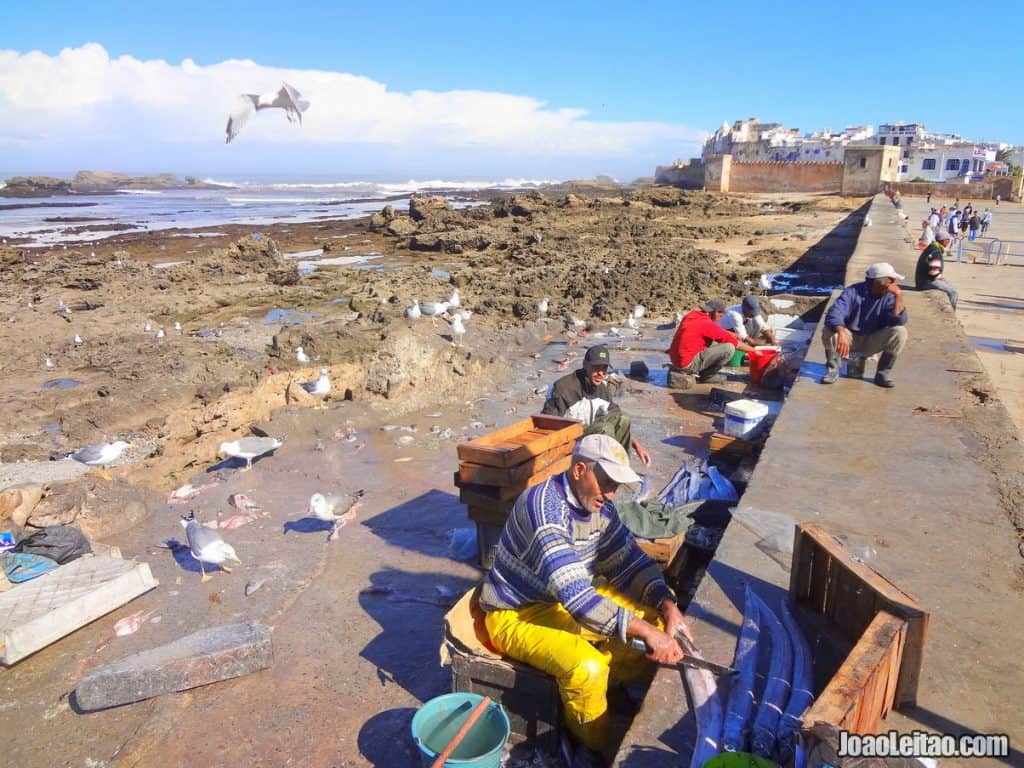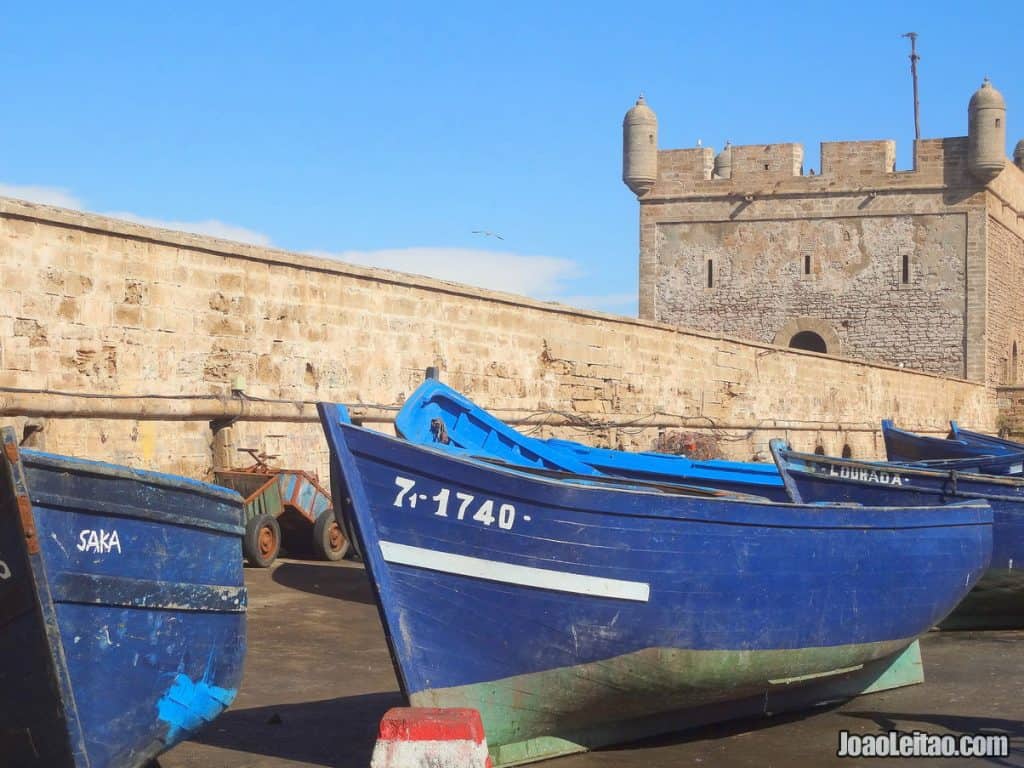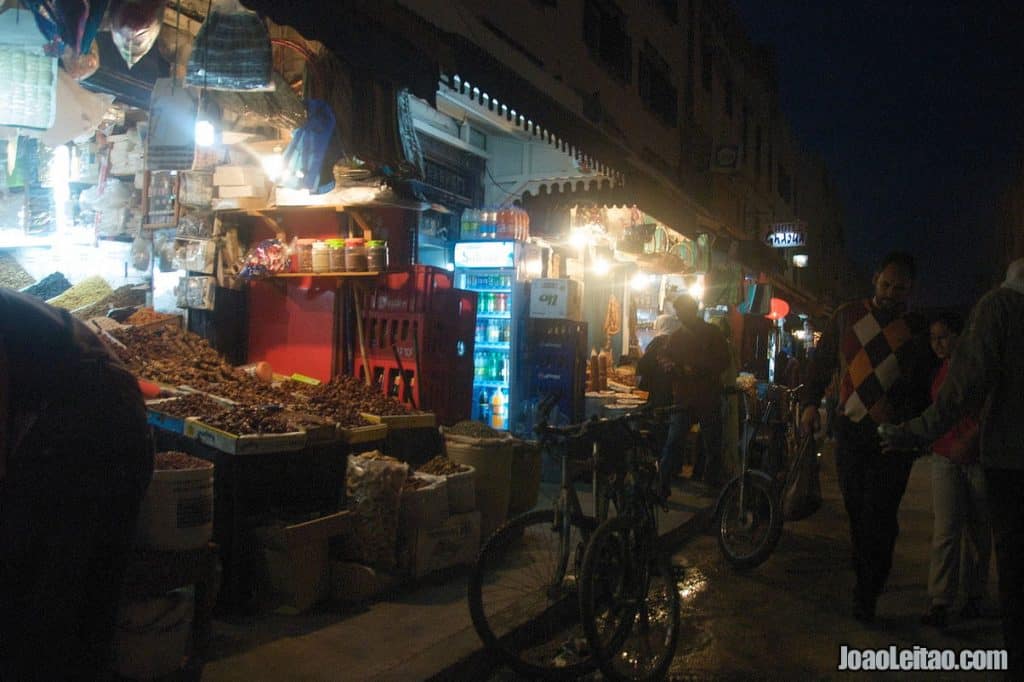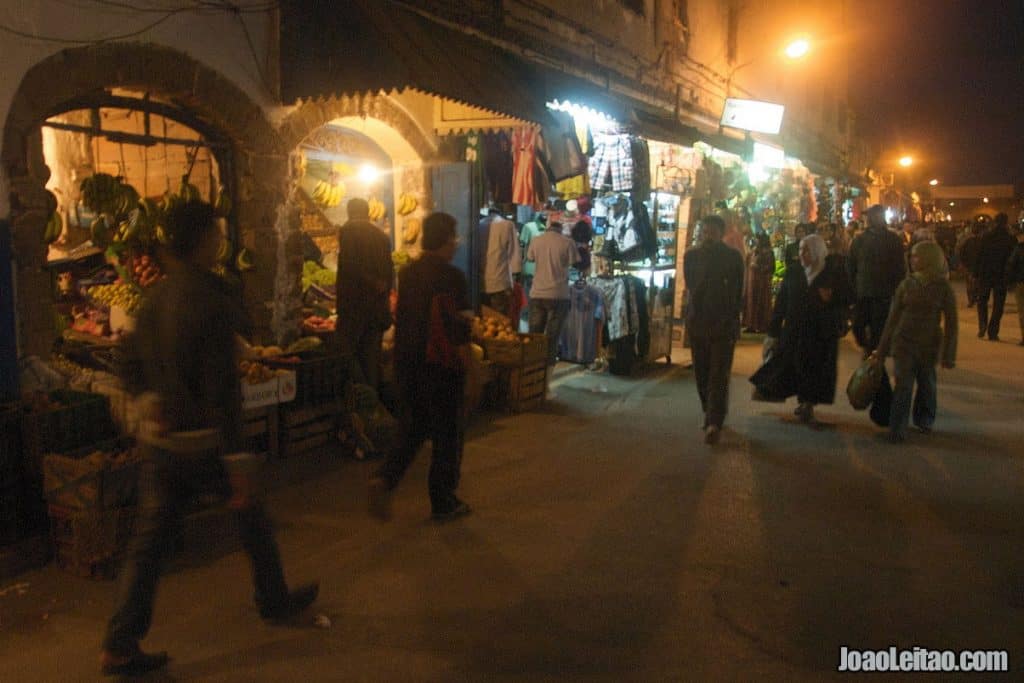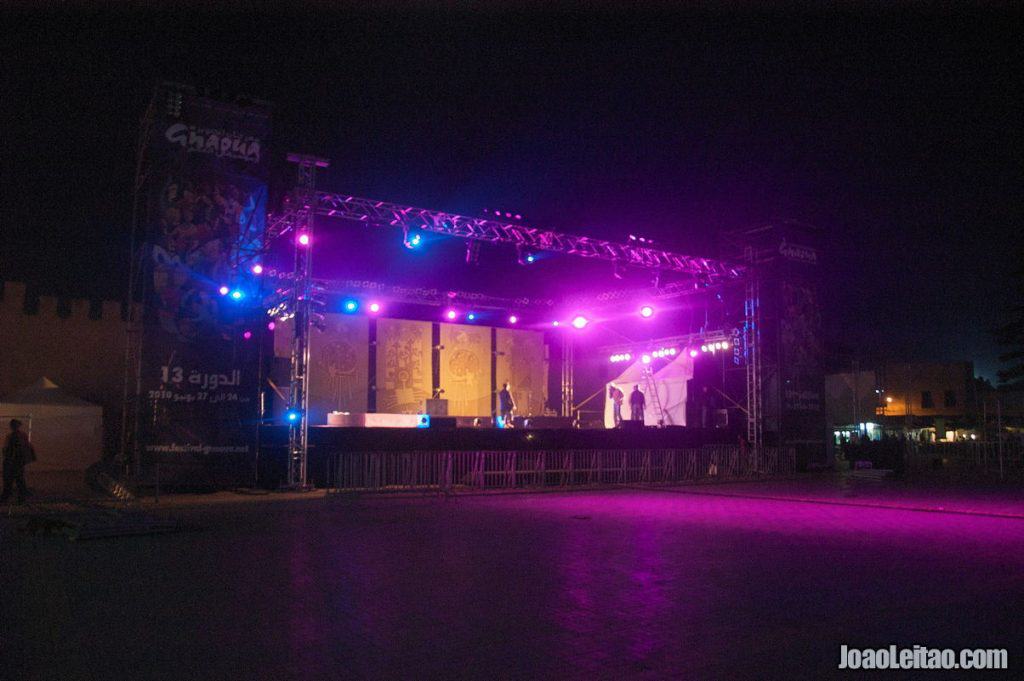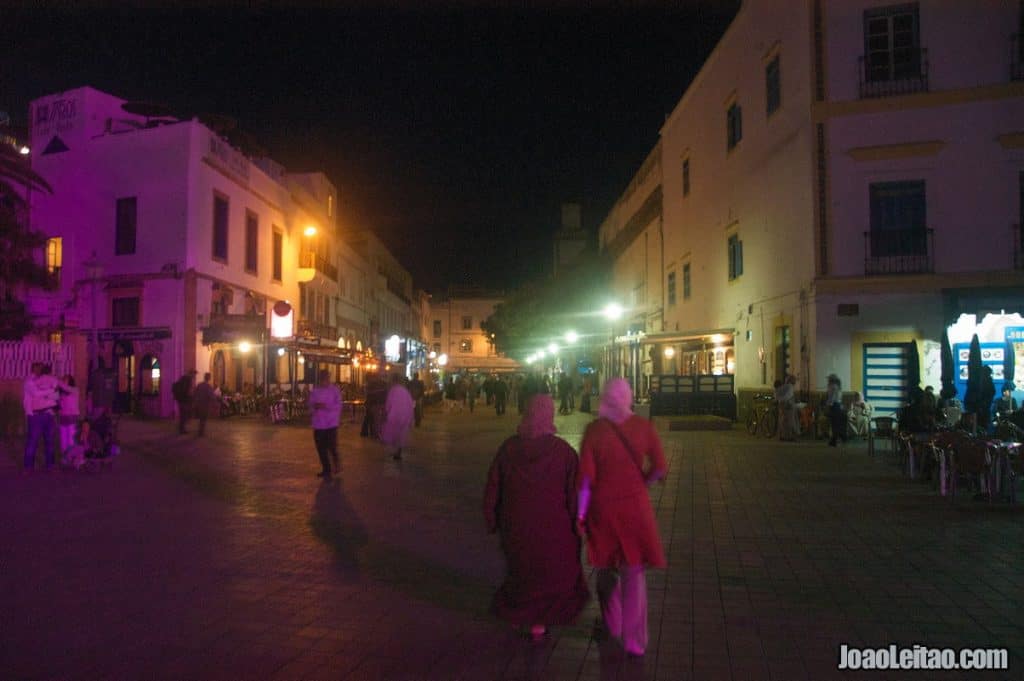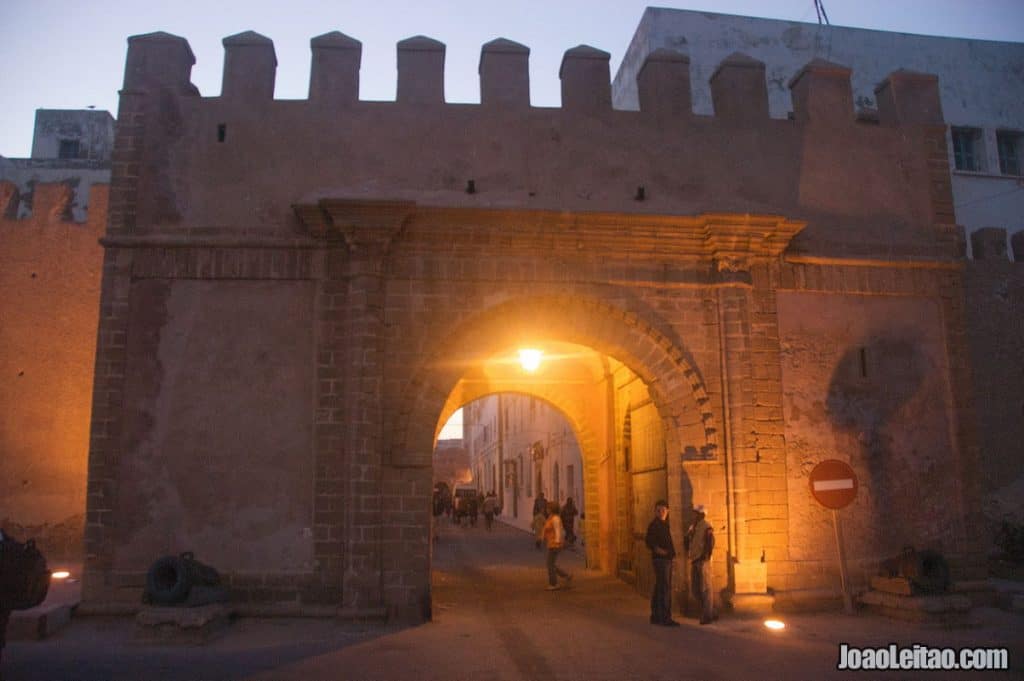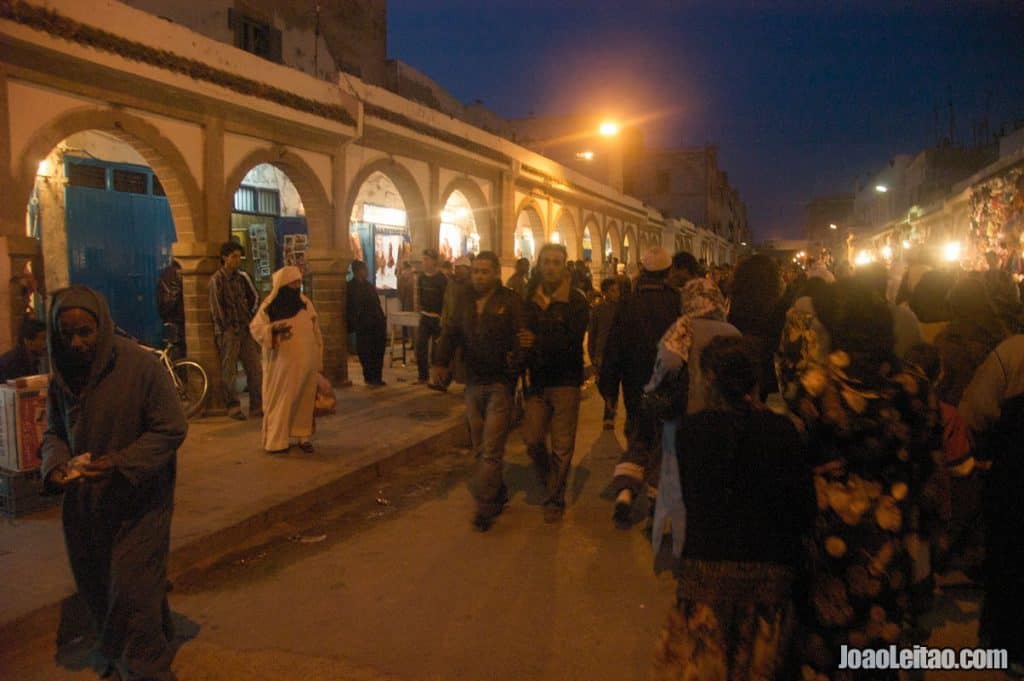Table of Contents
Visit Essaouira
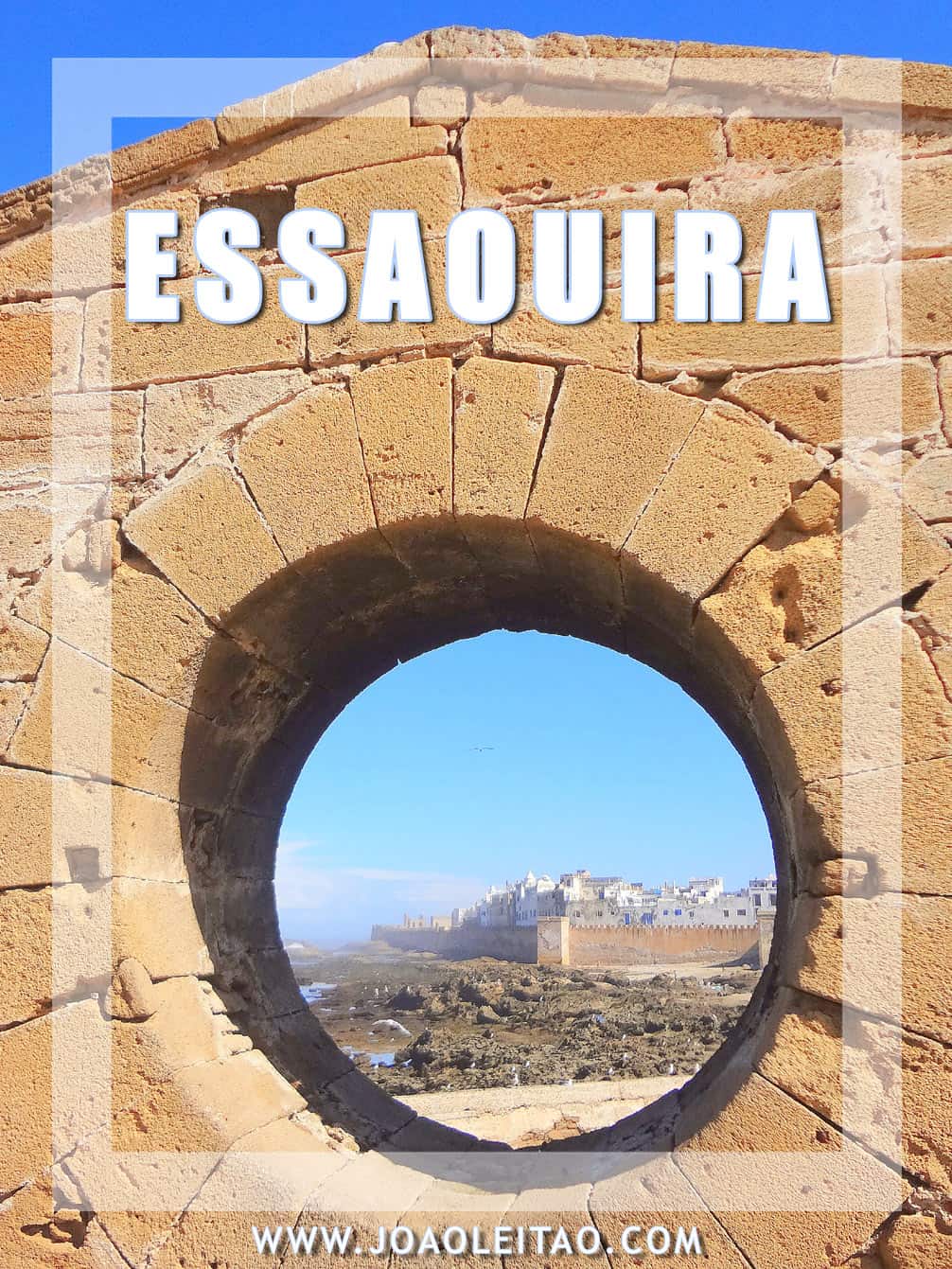
Mogador. That remote port on the Moroccan coast, founded around a fort built by the Portuguese, in the yesteryear of 1506. The Portuguese Expansion was taking its first steps, the dream of Morocco filled the Portuguese imagination, eager to control and explore the wealth of the commercial and trade routes that went by.
The tragedy of Alcácer Quibir that in 1580 would take the life of King Sebastião and the independence of the Kingdom of Portugal was still years ahead. In 1525, just nine years after its foundation, the Moors conquered that fortress. The Portuguese never regained control over it and, in time, it began to be known as Essaouira.
Introduction to Essaouira
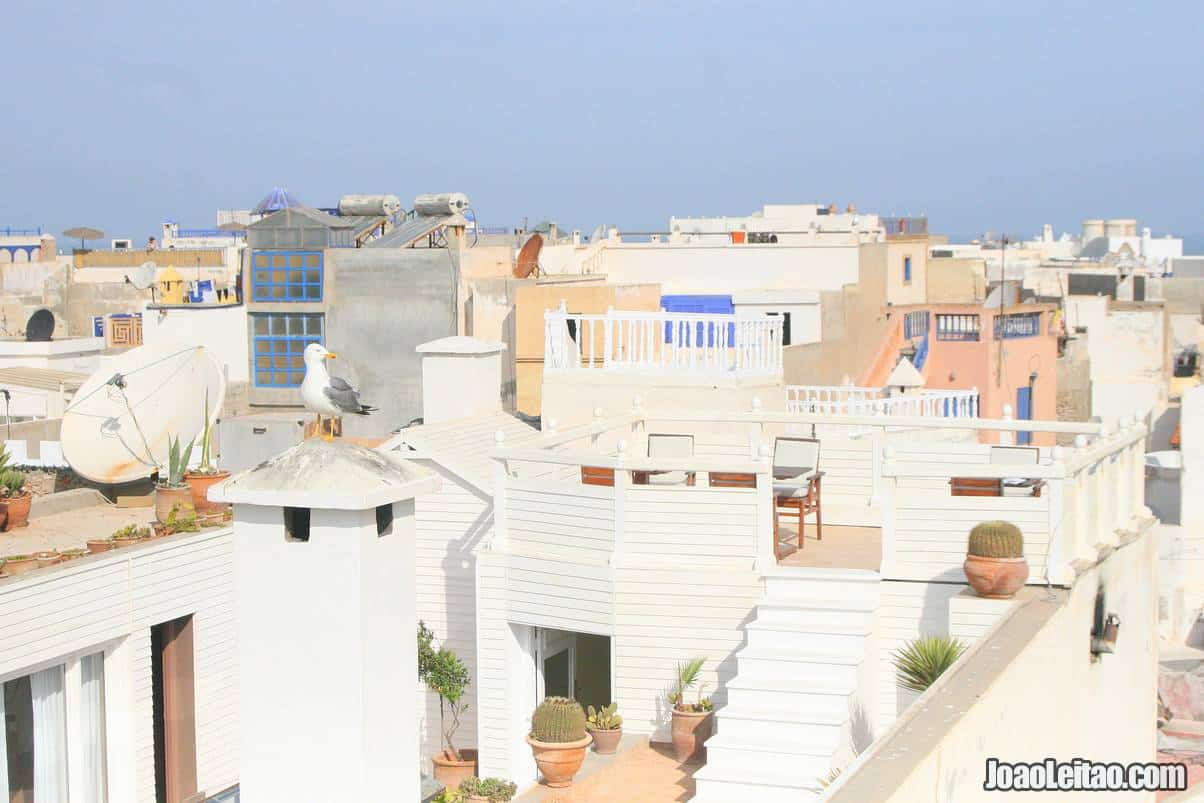
Despite the fact the city was founded in the 16th century, it only began to take shape from 1760 onward. Before that, it was just a fortress. But as the walls were built around the medina, by orders of Sultan Sidi Mohammed Ben Abdellah, Essaouira arose officially as a city.
The curious ones wonder about the geometric plan of the medina, so unusual in the country, where the historic centers are usually chaotic groupings of streets and alleys without logic. The reason is simple. The Sultan gave the project to a French military architect, Theodore Cornut, who obviously designed the “new” city following the template of parallel and perpendicular streets.
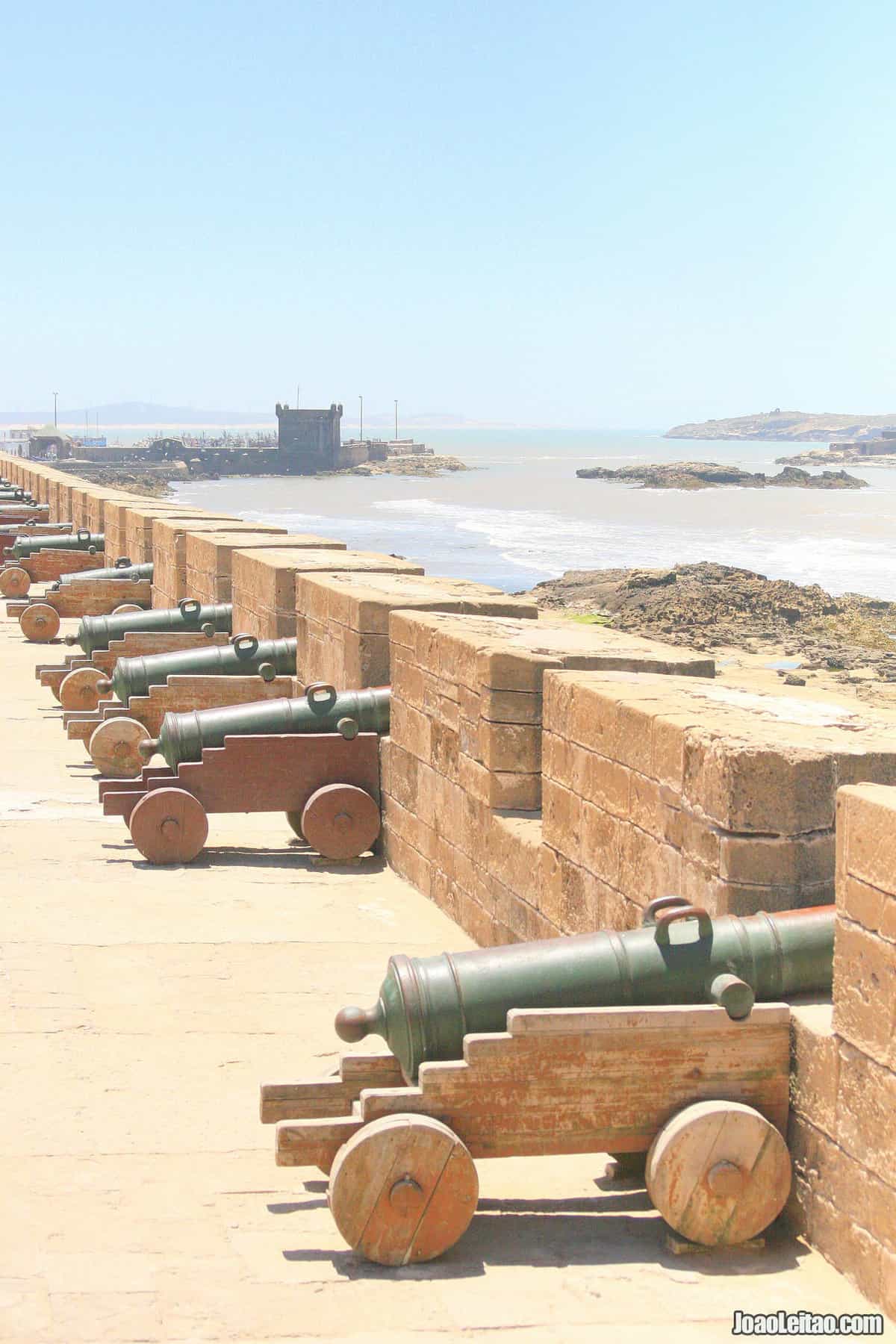
Essaouira had its peak around the 19th century when it was the only Moroccan port south of Tangier open to trade with the West. Encouraged by the favorable commercial conditions, some English merchants established themselves in the city, at the same time that the Jewish community grew in the kasbah neighborhood.
The age of the French Protectorate meant the decline of Essaouira, as its role was gradually transferred to Casablanca. After the full independence of Morocco, the departure of the Jewish community emphasized, even more, the city’s decline.
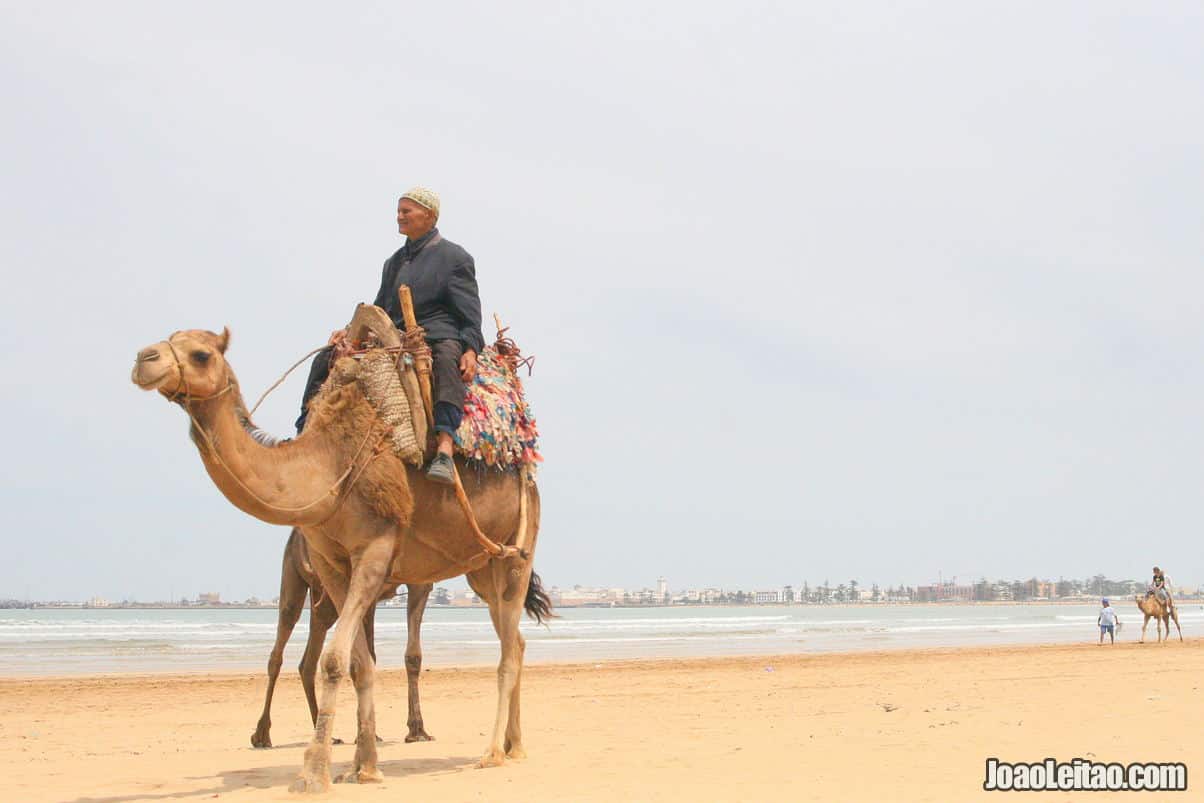
The last page of the History of Essaouira that we’ll turn today takes us to the 1960s and the 1970s. At around that time, the city was overrun by a wave of hippies, mostly Europeans, who built a stable community there. As time went by, the spirit of that golden age faded, the old timers vanished, taken over by time or other interests.
These days, you’ll only notice that some of the so-called alternative crowd are among the foreigners in Essaouira and that there’s a considerable intake of recreational drugs. It’s common to see local young people doing hashish and the “cake” vendors who recommend the “right” option on their trays.
Details of Essaouira
The Cats
Cats of Essaouira
If you pay attention, you’ll notice that cats are like sacred animals in Essaouira. They’re everywhere, and locals care for them uncomplainingly. You’ll see them at the port, competing with seagulls over fish leftovers, on the streets and shops, lazily lying on the merchandise, especially rugs and carpets, with the owners’ agreement. At cafés, they casually jump on customers’ laps who welcome them by stroking their backs. And they never complain about getting their picture taken.
The Doors
Doors of Essaouira
At the medina, play close attention to doors, falling apart or restored, to private houses or commercial buildings. They’re the traces of a faraway past, painted in different colors, with ornate stonework that sometimes tell some of their History. Some have dates while others have mysterious Arabic inscriptions.
Memories of the Portuguese Years
Mogador the Portuguese city
Although the Portuguese didn’t stay here for long, there’s still one trace of that presence. On a very secluded location, in a dark alley, you’ll find the ruins of a small Portuguese chapel. Next to it, most likely from a later date, the ruins of the Portuguese diplomatic delegation in Mogador.
There’s nothing left of the Portuguese fort in front of the fishing port because it’s completely submerged. At the small Christian cemetery by the Bab Doukalla gate (on the right side, on the way into the medina) there are some tombstones with Portuguese names, but no record of who they were.
When to Visit Essaouira
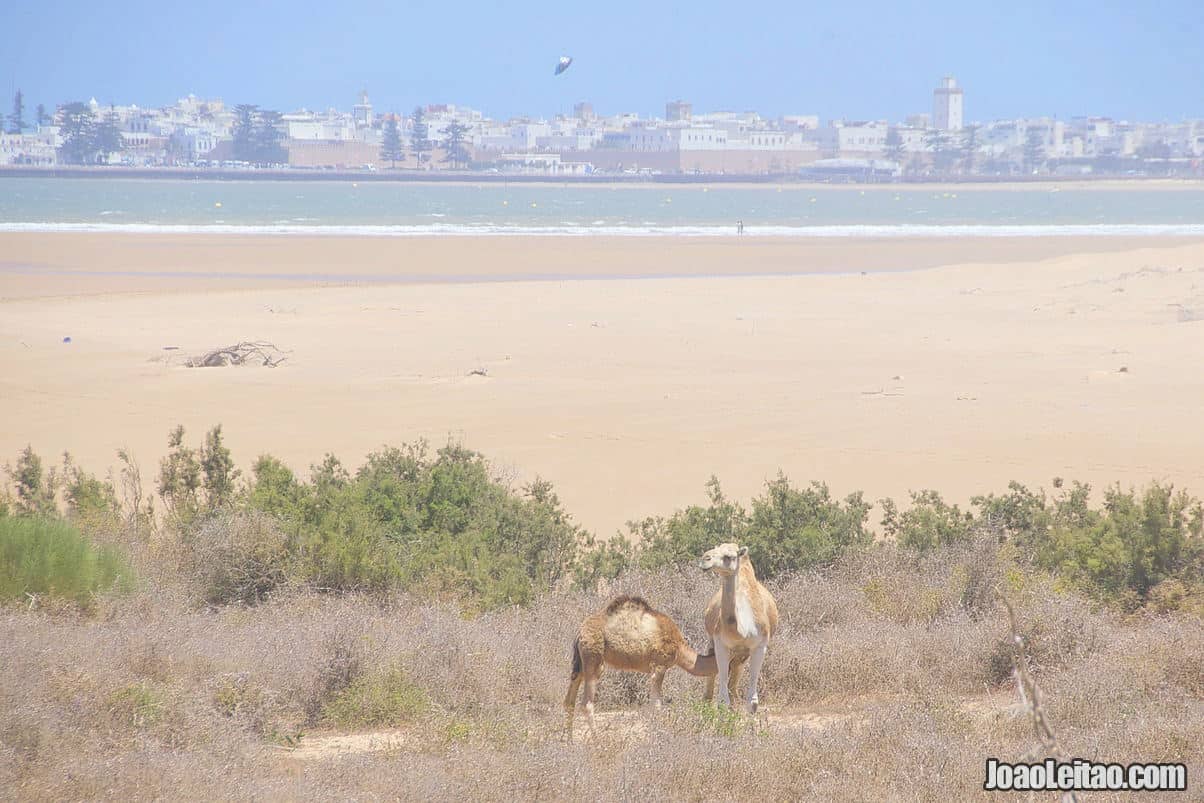
The best time to visit Morocco is, in general, in the months right before the summer, April or May, or the months right after, September or October. But Essaouira has a vast beach, so if you really have to travel here during the summer, you can cool off in the ocean.
To visit Essaouira even winter travel could be an option. It’s true that this lovely coastal city doesn’t attract the same crowds as Marrakesh, Rabat, or Fez, but visiting in the low season allows you to have a more authentic experience surrounded by locals instead of tourist crowds. Besides, accommodation prices here are a bit easier on the wallet. The winter isn’t too harsh around here. Some chances of rain, colder days but, generally speaking, it’s not bad.
Essaouira City Guide
Day 1 in Essaouira – What to Visit
Once you’ve settled in your hotel of choice, start by visiting the tourist office at Avenue du Cairo. They will provide you with great information, including a map with some walking trails and with all the must-see attractions of Essaouira.
1. The Medina
Visit the Medina of Essaouira
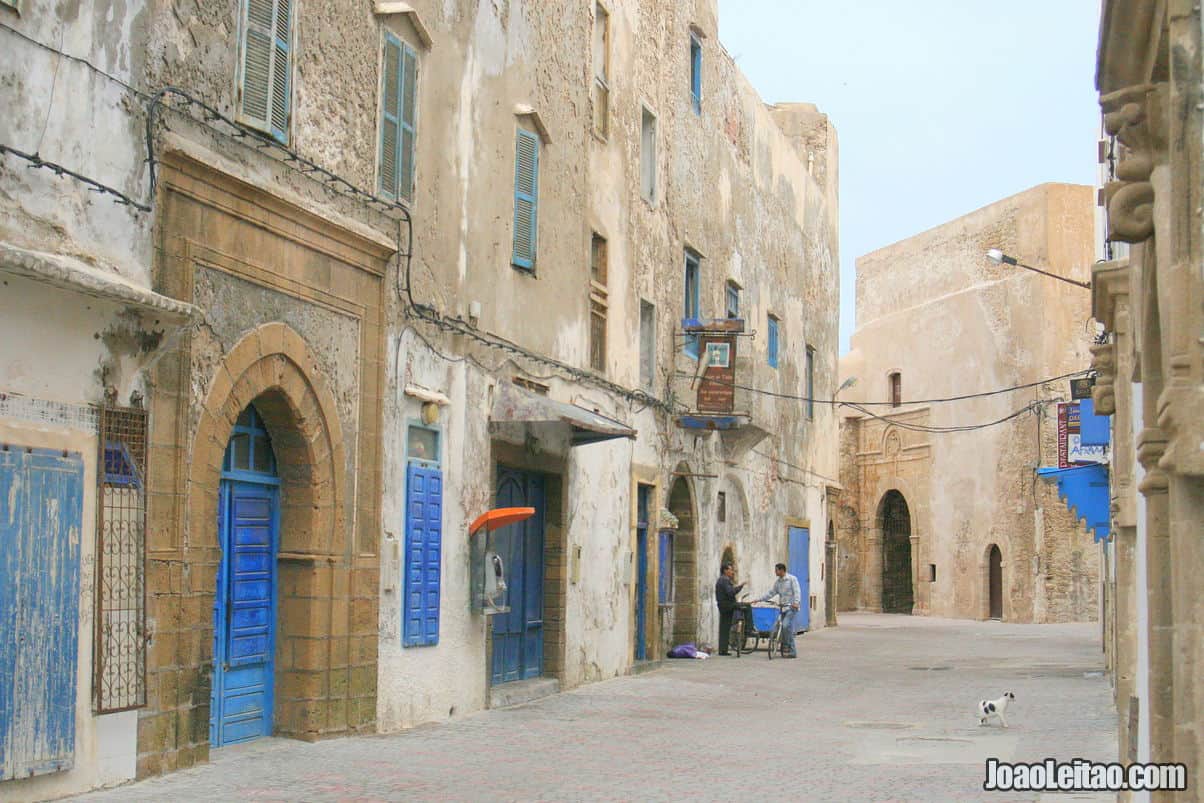
In 2001, UNESCO listed the medina of Essaouira as a World Heritage Site for its unique combination of Arabic and European architectural elements.
Most people will probably enter through the Bab Marrakesh gate, near the Supratours bus stop.
On the left, there’s a not too exciting handicrafts market, but the street on the other side of the gate is fascinating, a first glimpse of the atmosphere inside the medina. Further up, you’ll see one of the two main streets of the old city of Essaouira, side by side to one another from Northeast to Southwest (Avenue de l’Istiqlal/Avenue Mohammed Zerktouni and Rue Sidi Mohammed Ben Abdellah). There, on the crossing, you’ll see a mosque. Across the street, the spices and fish market.
Look right, and you’ll see the Doukkala gate, one of the last places in Morocco that preserved the tradition of the storytellers. On the left, you’ll see the Grand Mosque and the vast space around the Clock Tower. The best
cafés and hotels in the medina are in that direction.
Traditional shops fill the main streets, some of them catering to tourists and other smaller shops that cater mostly to locals.
2. The Mosques
Visit the Mosques of Essaouira
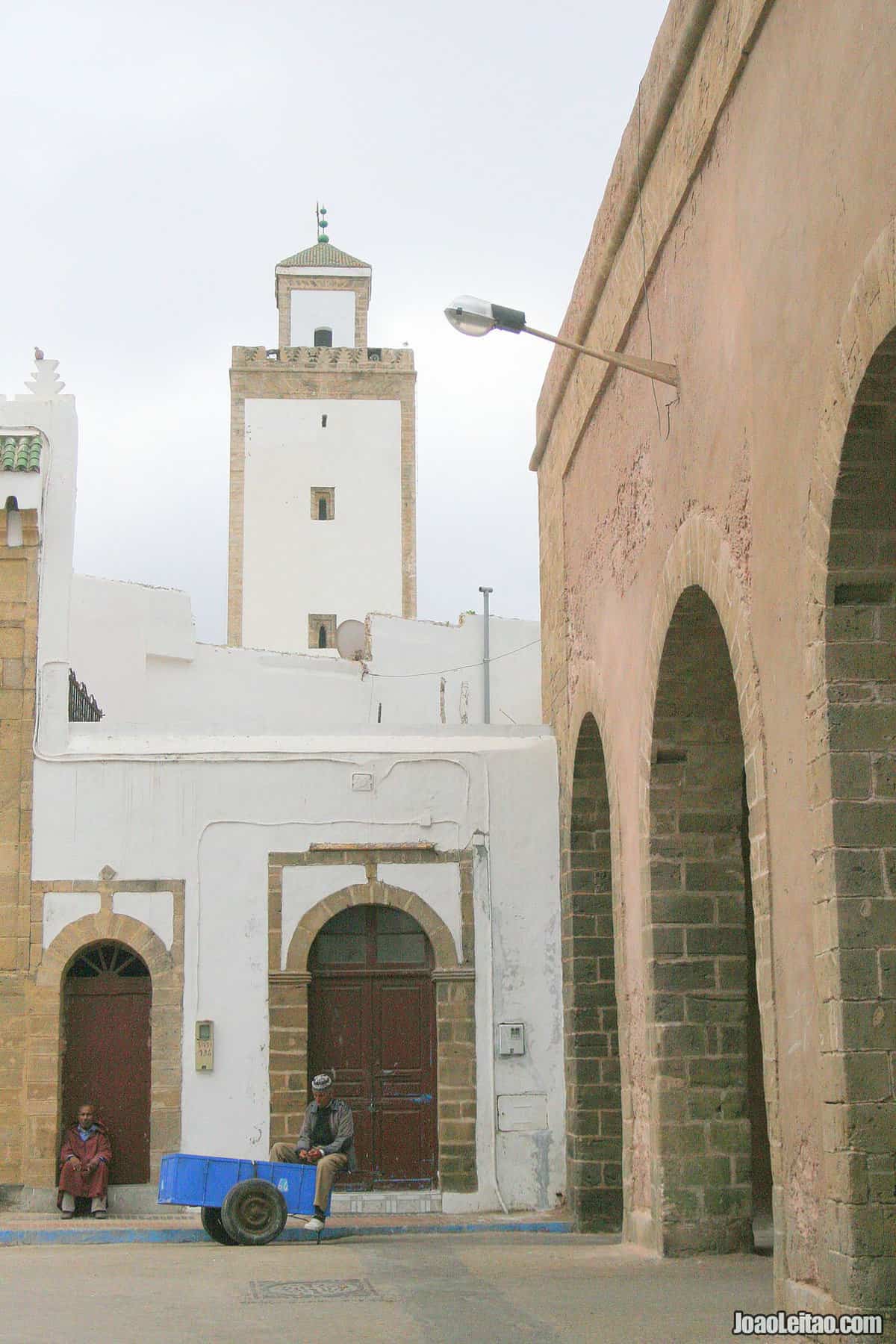
There are precisely 13 mosques in the medina. These include the Sidi Mohamed ben Abdellah mosque, the oldest one and the only one built in the first developing stage of Essaouira in 1764. The Ben Youssef mosque is the most majestic, covering 2,000 square meters.
In addition to the mosques, there are numerous zaouias (Islamic schools or monasteries) in the medina, including the Hamadcha zaouïa (from the 18th century), the Sidna Bilal zaouïa (founded by the brotherhood of the Gnawa), and, the most important of them all, Aïssaoua zaouïa.
3. Place Moulay Hassan
Visit Place Moulay Hassan
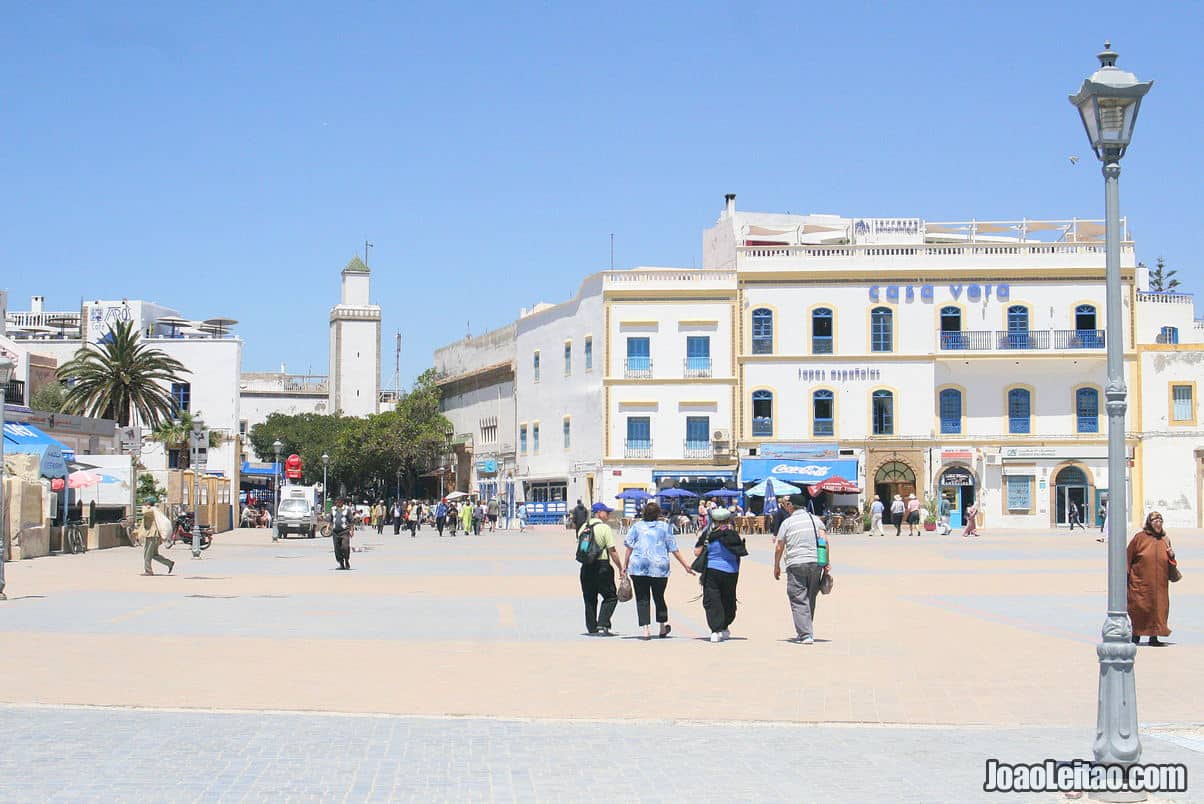
Place Moulay Hassan is the medina’s functional center. This large square was built after the destruction of the Al Achour gate and the wrecking of a large portion of the Imperial Palace. Since then, it’s been the central location for the most significant events in Essaouira, including political protests and military parades.
Every year, at the end of June, it welcomes the famous Gnaoua Music Festival, a music genre that’s considered by many the original roots of blues and jazz.
The main cafés in the city are around the square, including the oldest of them all, Café du France. A classical spot with regular customers that look like they belong to a different era.
4. Essaouira Souks
Visit Essaouira Markets
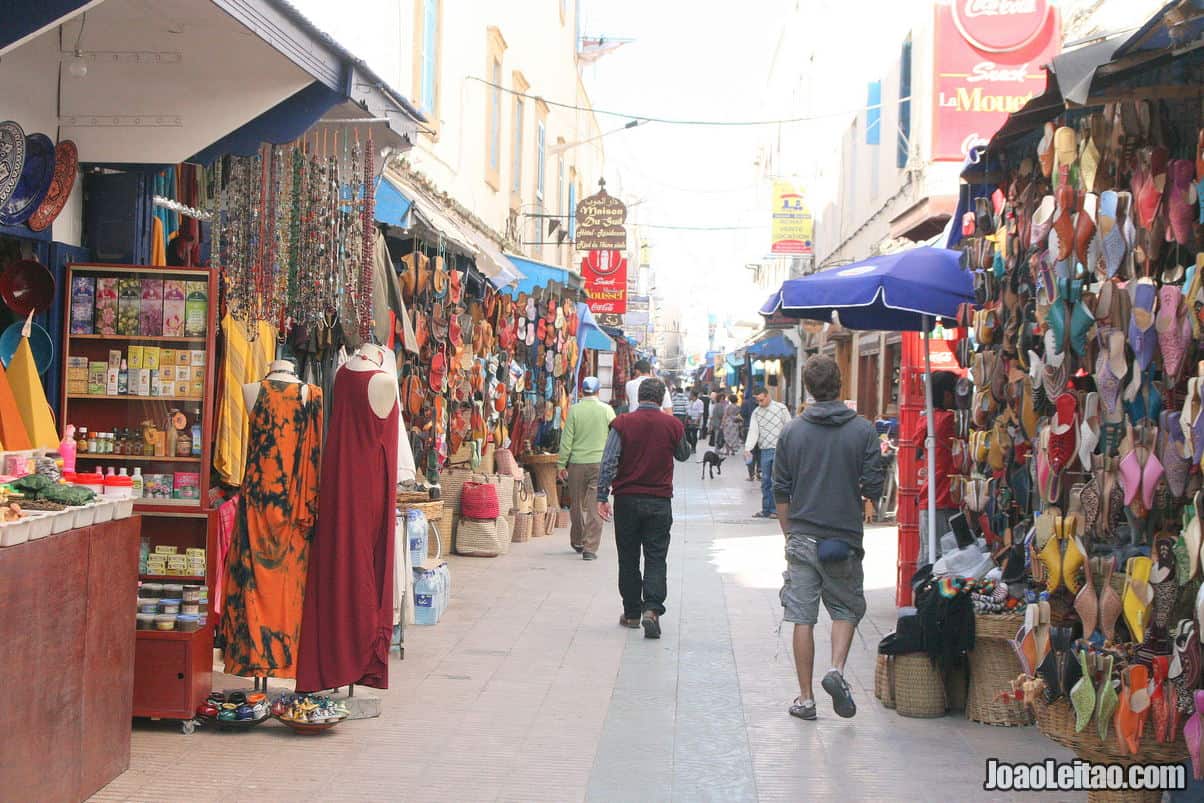
The city tailors run their shops in a small alley between the Le Joutia and Marché de Grains squares. They can design and stitch a complete suit for you overnight.
But back to the squares: at Le Joutia, the smallest of both, there’s a daily flea market, very lively in the morning when some of the antique auctions take place. At Marché de Grains (grains market in English) only a couple of corn vendors survive at the site of the former cereal market (hence the name). They mostly sell spices in the area now, an extension of the Spice Souk nearby, that outgrew the wool market that took place there in the 19th and 20th centuries. Nowadays, there’s only one wool vendor. They say he comes to the market every day since 1954. Outside his shop, you can see (and buy) old scales and weaving machines.
Near Skala de la Ville, on rue de Skala, there’s a remarkable number of woodcrafts shops, something typical of Essaouira, where they masterfully work the thuya, a kind of mahogany. Here you can buy décor pieces, furniture, and even chess sets.
5. Jewish Quarter
Visit the Jewish quarter
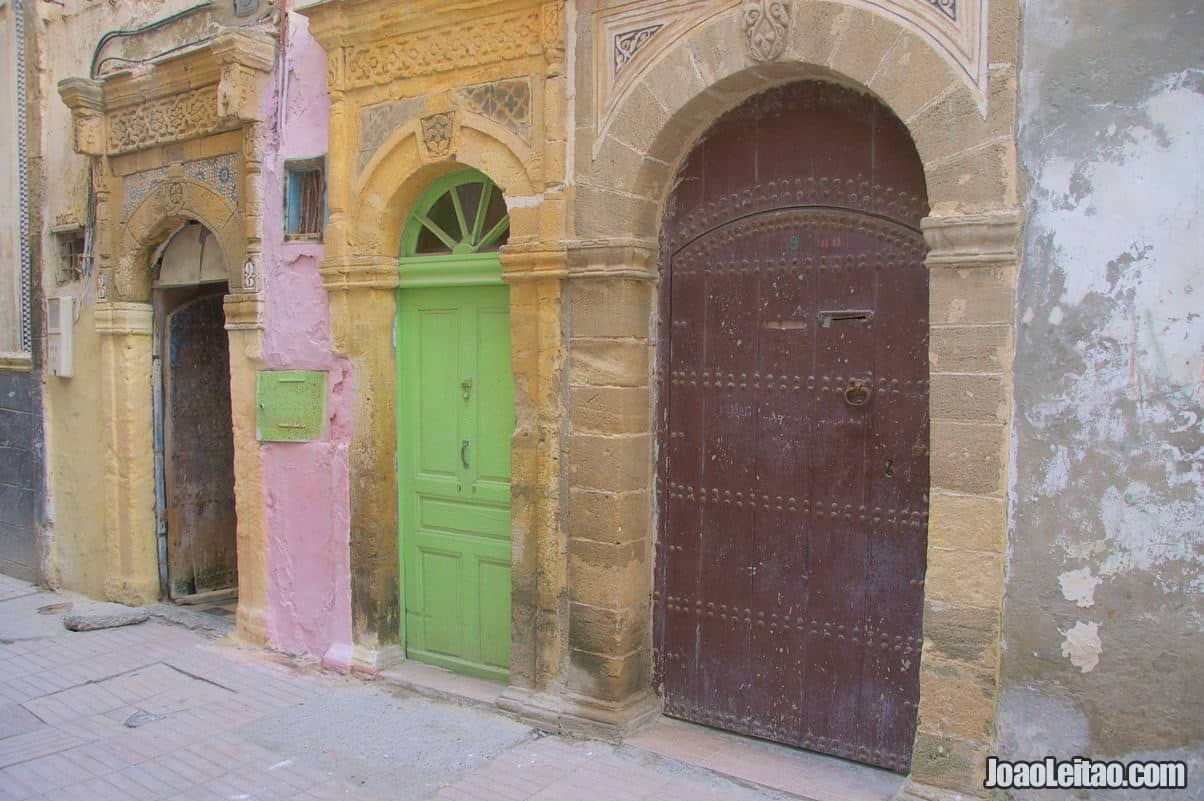
The Jewish quarter, or mellah, is in the northeast side of the medina. It’s a deteriorating area where the impoverished members of the community live. When the Jewish left for Israel, after the foundation of the Hebrew state, this part of Essaouira was abandoned, and today most of the houses are practically in ruins.
In addition to some stars of David engraved over some of the doors, there are three small synagogues, simple places of worship from the past, that you can visit.
Those synagogues include Slat Lkahal (119 Rue du Mellah), built in 1850; it’s usually closed, but there’s a sign with a phone number for those who’d like to call and book a visit. It was restored at the end of 2016, by the hand of Mr. Haim Bitton who tries to keep the place ready and available for tourists.
The Simon Attias synagogue, from 1882, was also undergoing renovation work at the end of 2016. It had closed in 2009, but it’s planned to house the Jewish Museum.
6. Sidi Mohammed ben Abdellah Museum
Visit Sidi Mohammed ben Abdellah Museum
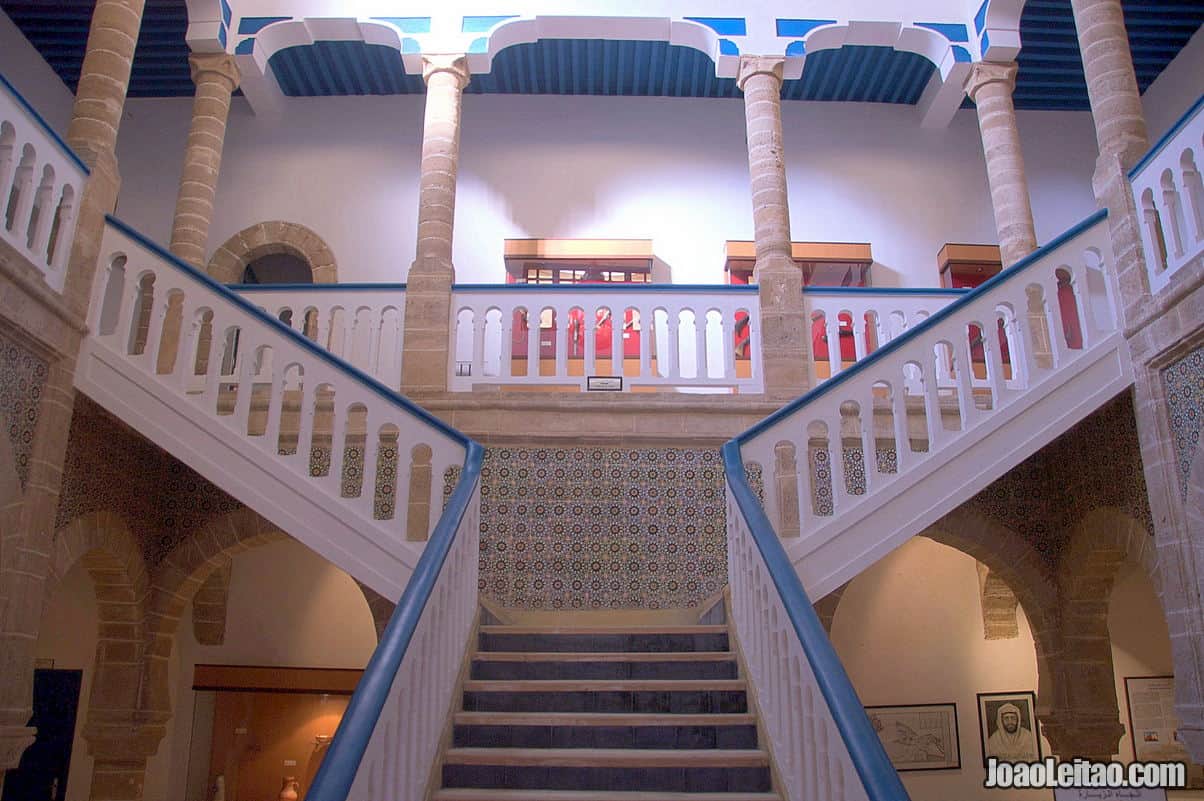
The Musée Sidi Mohammed ben Abdellah (rue Laâlouj) is located at the center of the medina, between the mellah and the kasbah, close to the post office. The museum’s collection includes old coins, Moroccan rugs, weapons, music instruments, traditional clothes, and photographs. The museum is in a two-floor manor, built in the 19th century and that was recently restored. It opens Wednesday to Monday from 8 a.m. to 5 p.m., and the admission fee costs 10 Dirhams.
7. Dar Souiri Cultural Center
Visit Dar Souiri Cultural Center
The Dar Souiri Cultural Center is also worth a visit. It’s the headquarters of the cultural organization Association Essaouira Mogador since 1992. This beautiful 19th-century building was once the office of the local government at the time of the French occupation.
This manor sums up the combination of architectural styles that granted the medina of Essaouira the title of UNESCO World Heritage Site: you can see the Arabic style on the main entrance, the interior décor, and the columns, while the many windows facing the outdoors are completely French-influenced. The Dar Souiri playhouse welcomes concerts and cultural performances frequently, but it’s still worth visiting the venue even when there are no shows scheduled. In addition to all this, there’s free WiFi which always comes in handy.
8. Borj Bab Marrakesh
Visit Borj Bab Marrakesh
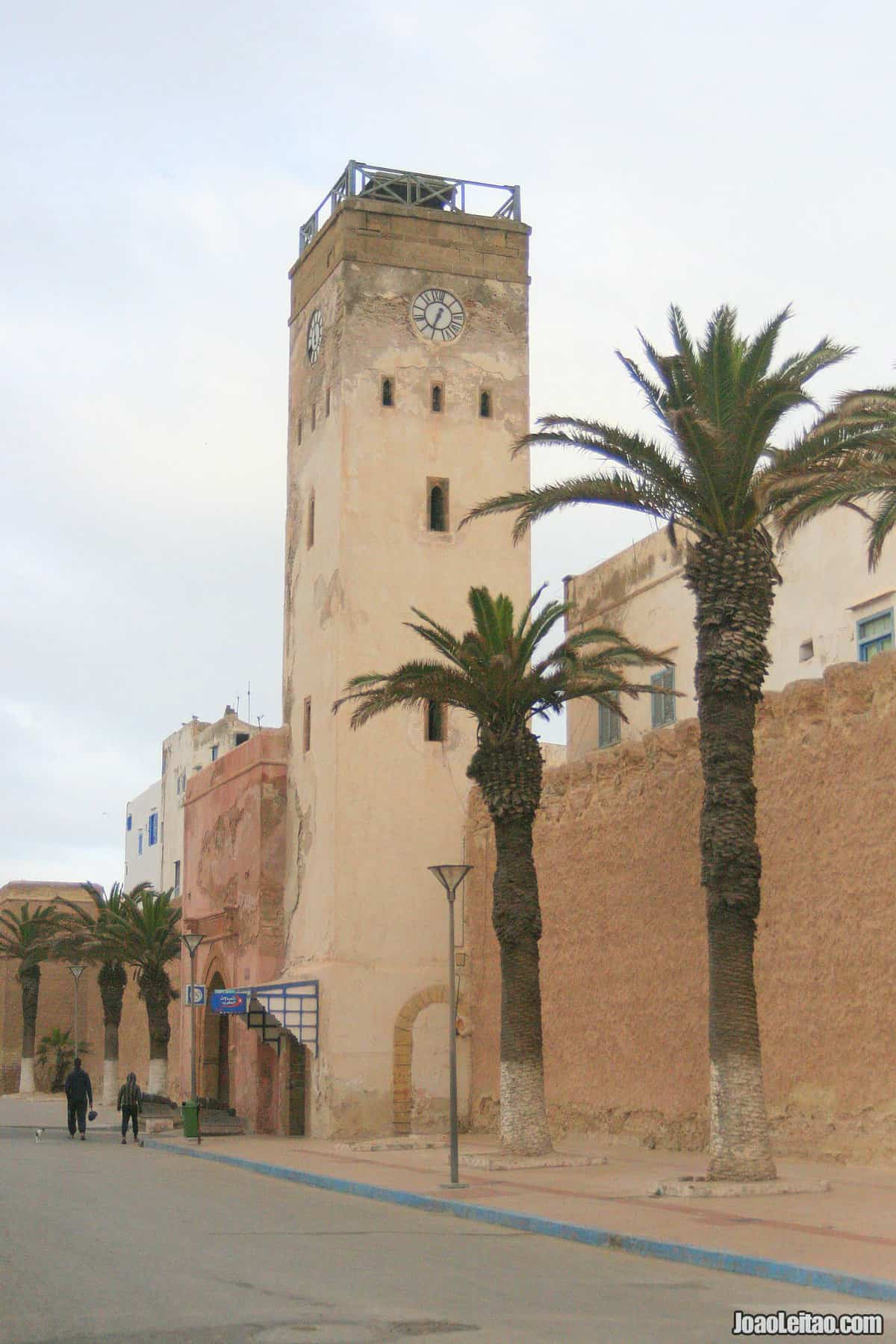
To the travelers reaching Essaouira on the Supratours bus, that will be the first sight of the city’s historical heritage. It’s a massive defense tower, painted dark red, next to the Marrakesh Gate.
Sultan Moulay Abderrahmane Ben Hicham had it built in 1846 to protect the medina from attacks coming from the East and the Southeast. They used to store gunpowder inside.
After the French occupation, the tower became a military barrack with an area for the stables. Nowadays, the tower is a cultural space that Moroccan and foreign artists frequently use for their exhibitions.
Day 2 in Essaouira – What to Visit
1. The Walls – Port
Visit Essaouira port ramparts
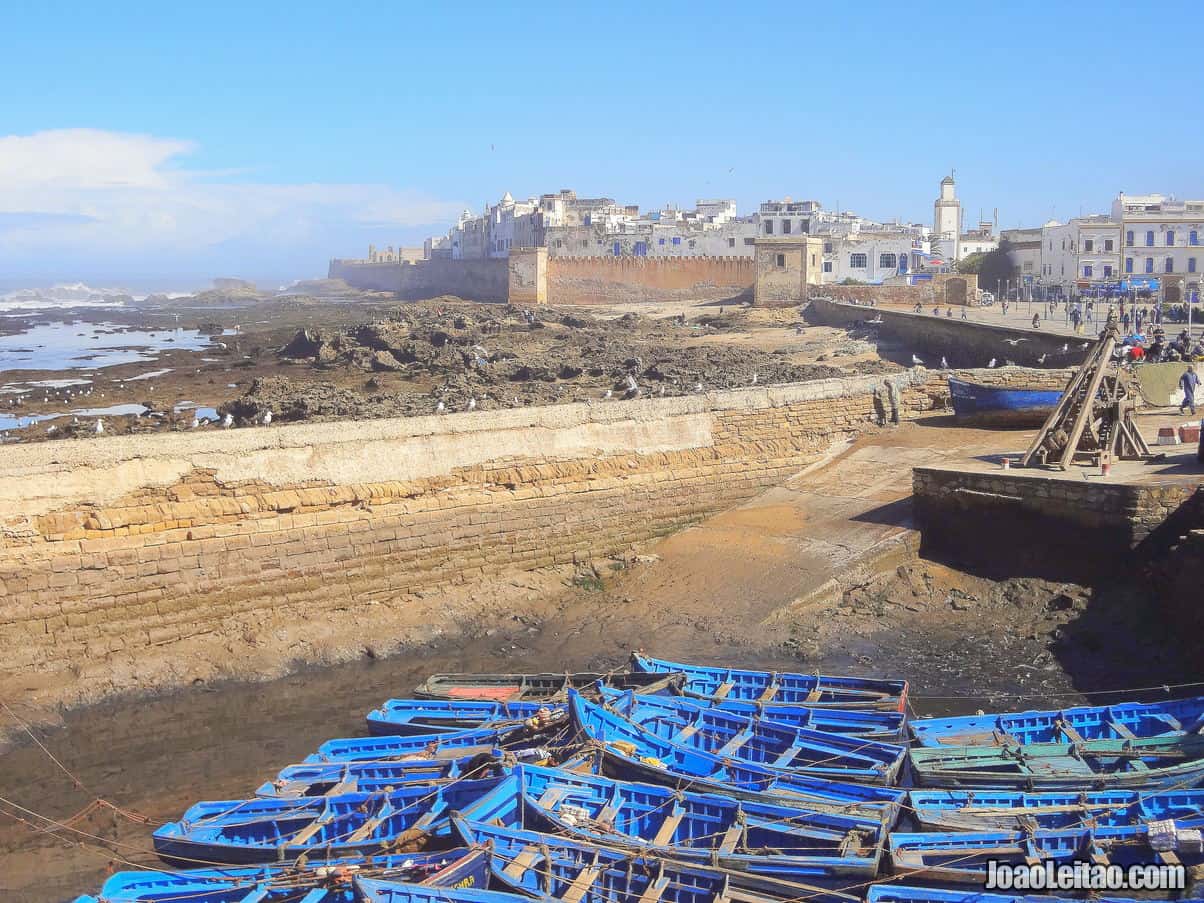
Called Skala du Port, this fortress has fantastic views to the fish dock and the fishermen’s daily routine. A turmoil of seagulls surrounds the tower that marks the port entrance. Sultan Sidi Mohammed Ben Abdellah built the fortress in 1764. The 200-meter wall has two wings that connect one another. On the top terrace, notice the four watchtowers, one in each corner, and the old canons still in position. The admission fee costs 10 Dirhams, and the fort is open from 9 a.m. to 5.30 p.m.
2. The Walls – Medina
Visit Essaouira medina ramparts
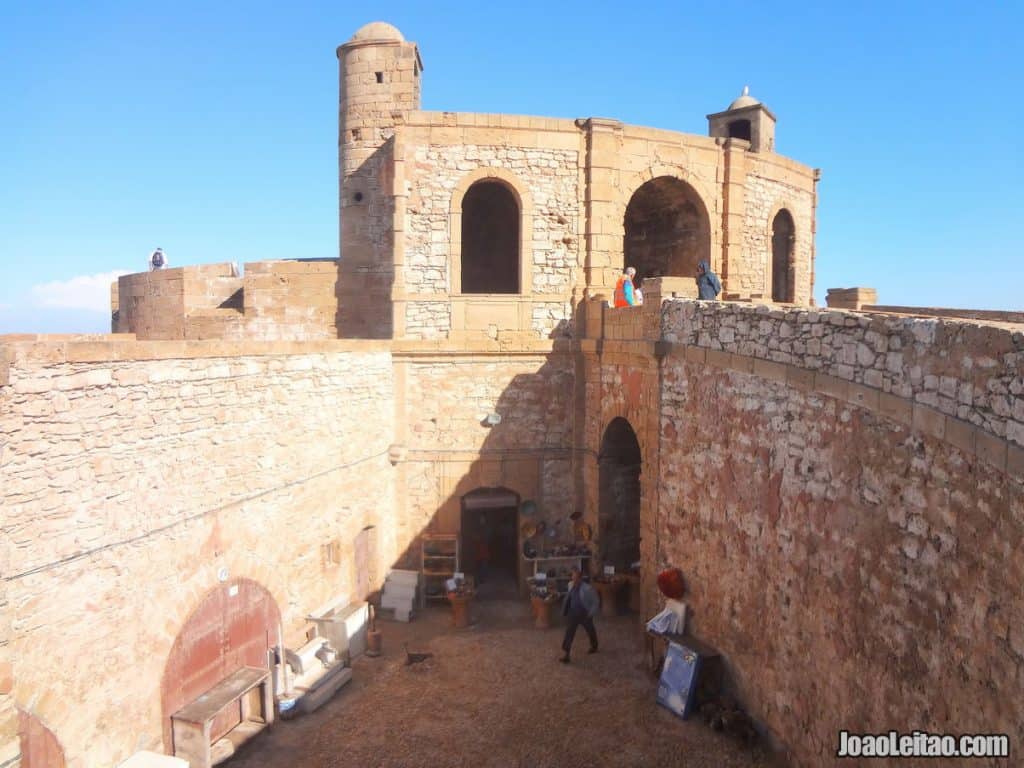
A significant part of the medina that faces the ocean is walled, although only a portion of it is opened to the public. It’s called Skala de La Ville or Skala de la Kasbah, and you can access it at all times, except when the sea is too rough, and the municipal security staff prevents you from visiting some of the parts for safety reasons.
The best way to reach Skala de La Ville is to come from Place Moulay el Hassan and turn north on the street at the end of the square.
Skala de La Ville is perfect for people-watching. Essaouira locals hang out there, especially in the evening. Of course, there are other places to socialize, but the fortresses are the favorite social spot where you go to see and be seen, date, and meet friends.
Lonely boys find the best spots in the walls to watch the groups of girls walking by. Some artists showcase their work, hoping that a sale will save the day. And the ocean, if it’s not too rough, puts up a remarkable show, with waves crashing at the bottom of the walls, producing massive water walls and white foam.
On the wall niches, you’ll see the canons gifted by merchants to Sultan Sidi Mohammed Ben Abdellah at the end of the 19th century. Some of them have the Portuguese Royal House brand.
The sidewalk ends at the North Fortress, that closes at the end of the day and every time the sea is rough. It’s an excellent spot to see the sunset.
Some of the scenes of famous TV show Game of Thrones were shot here, but this wasn’t the first time Essaouira was chosen as the set for a major production. The opening scene of Othello (1952, Orson Welles) was shot on these walls. Fun fact: this movie was a commercial fiasco at the time. However, part of the critics retracted their opinion when in 1992 Welles’ daughter launched a massive promotion campaign for the film, which included a screening in Essaouira with special guest King Mohammed VI (still a prince at the time).
3. Fishing Port
Visit the fishing port of Essaouira
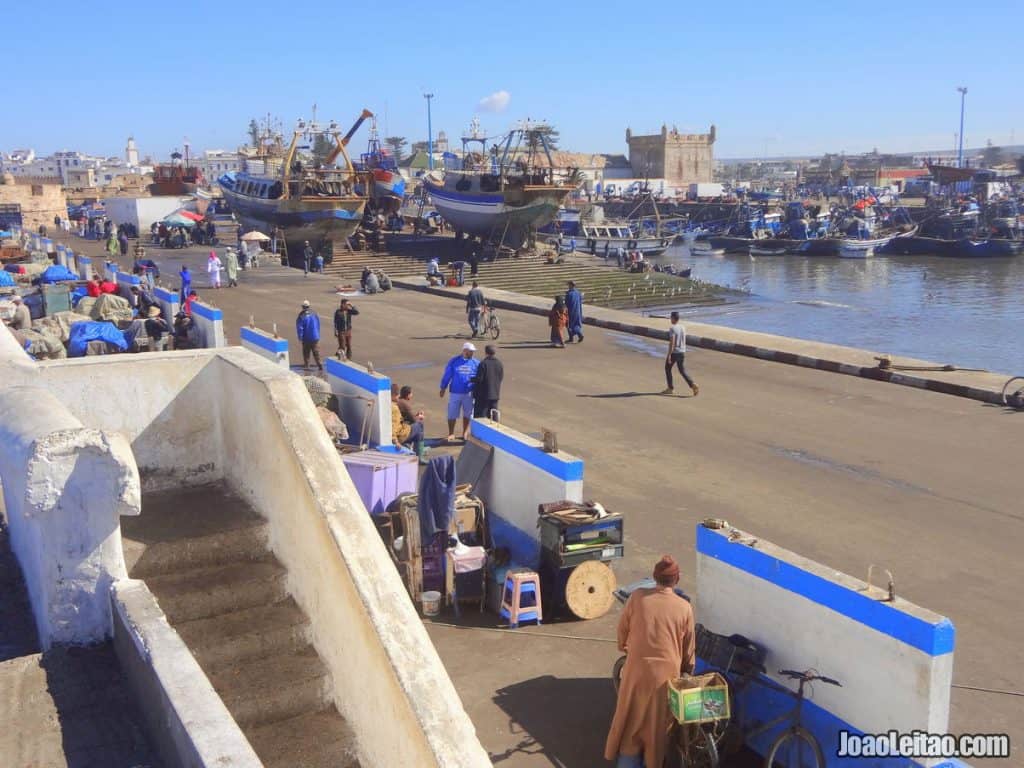
The fishing dock is very close to the medina. You reach the port through the Sea Gate and right in front, near the entrance to Skala du Port, you’ll see a fleet of beautiful boats, all blue, grouped in a uniform color mass that results in great photographs. If you wake up early and get lucky, you might see the boats arriving or departing. Fishermen are careful, and they only go out at sea in favorable weather.
You can walk along the pier, where the bigger fishing boats are docked, and watch the men on their daily work tasks, fixing fishnets or doing some small repair work on the boats. Keep in mind that, maybe out of superstition, fishermen don’t like to be photographed, even if you’re just taking a wide shot of the landscape.
If you’re staying at a place where you can cook, you can buy some fish here although there’s not officially a market. But there’s always something for sale, under the watchful eyes of the many cats around.
4. Christian Cemetery
Visit the Christian Cemetery
Outside the medina walls, taking a left when you exit through the Bab Doukkala gate, there’s a peculiar Christian cemetery. It’s the only one of its kind in the city, created in 1745. In the following centuries, every Christian who died in Essaouira was buried here, and there’s an interesting mix of nationalities and occupations, including diplomats and merchants.
The cemetery went from being a bit neglected to being in better shape after the High Atlas Foundation intervened and cleared the place from debris and intrusive plants, cleaned and restored some of the tombs in the worst shape.
The cemetery is usually open and free, although the keeper might sometimes ask for a small tip. 10 or 20 Dirhams should do it.
5. Jewish Cemetery
Visit the Jewish Cemetery
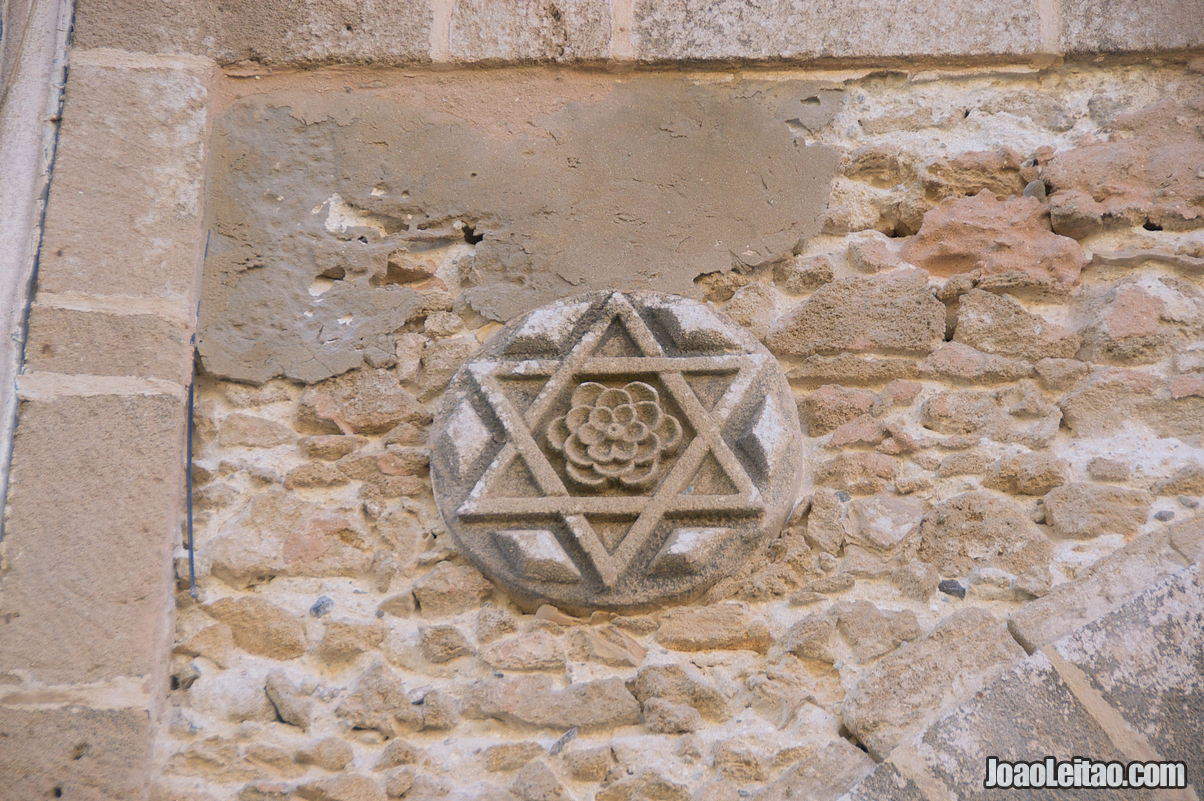
Outside the medina, but not too far from the Bab Doukkala Gate, via Av Molay Hicham, you’ll see the Jewish Cemetery of Essaouira. Visiting this place is not a straightforward experience. The gate may or may not be open. In the second option, you might get the attention of the cemetery caretaker.
Although it’s in better shape than the Christian cemetery, there’s no available information for tourists. Those who pay close attention will find the tomb of iconic Jewish leader Rabbi Pinto, but for those who aren’t so familiar with the Jewish community matters, you’ll have to get by with wandering through the tombs and getting a feel of the place.
6. The Beaches
Visit Essaouira beaches
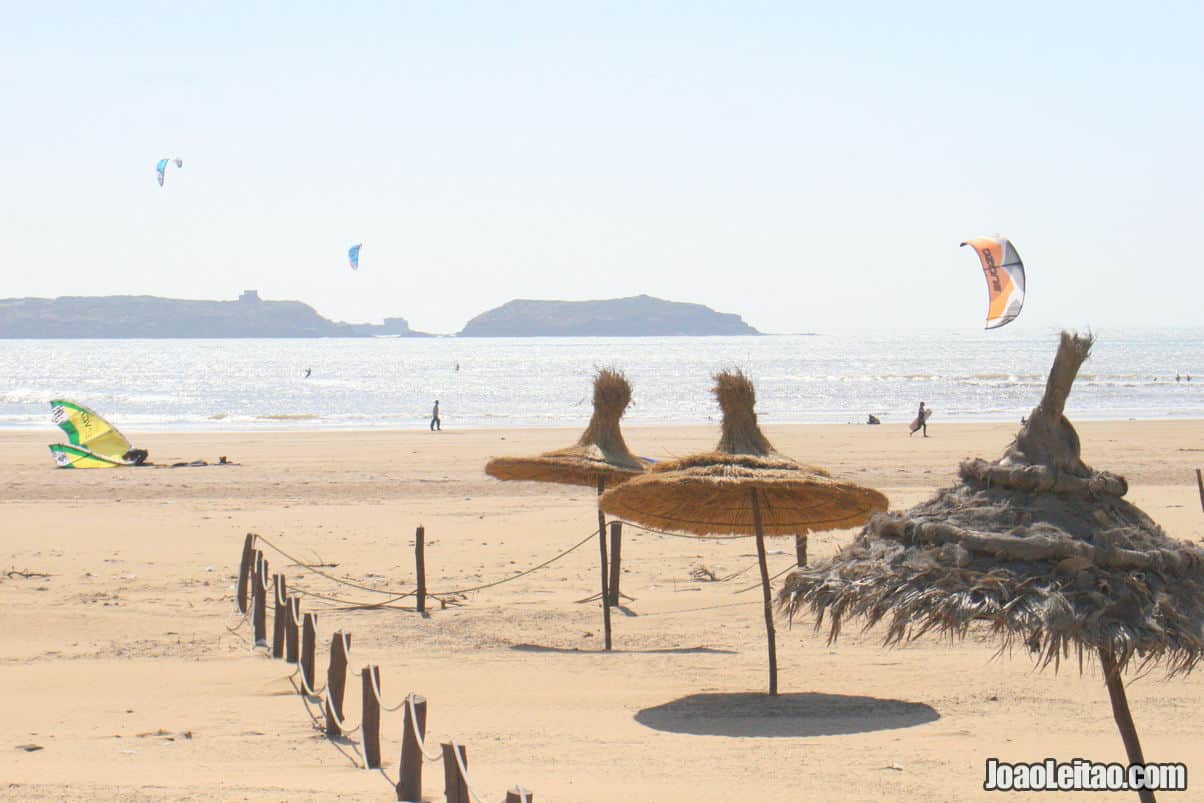
South from the doors of the medina, there’s a vast beach of thick sand that stretches as far as the eye can see. It’s a great place to cool off on hot days but, if you’re only passing by, it’s still a great place to visit. Locals walk in the beach frequently and, in the late afternoon, the sand is full of amateur soccer matches that lack technique but provide an exciting show. Take note that foreigners are usually welcomed to play.
Naturally, many people approach tourists on the beach offering a horse or a camel ride, and it’s up to you to accept it. If not for the ride, at least for the opportunity to photograph the animals and their handlers.
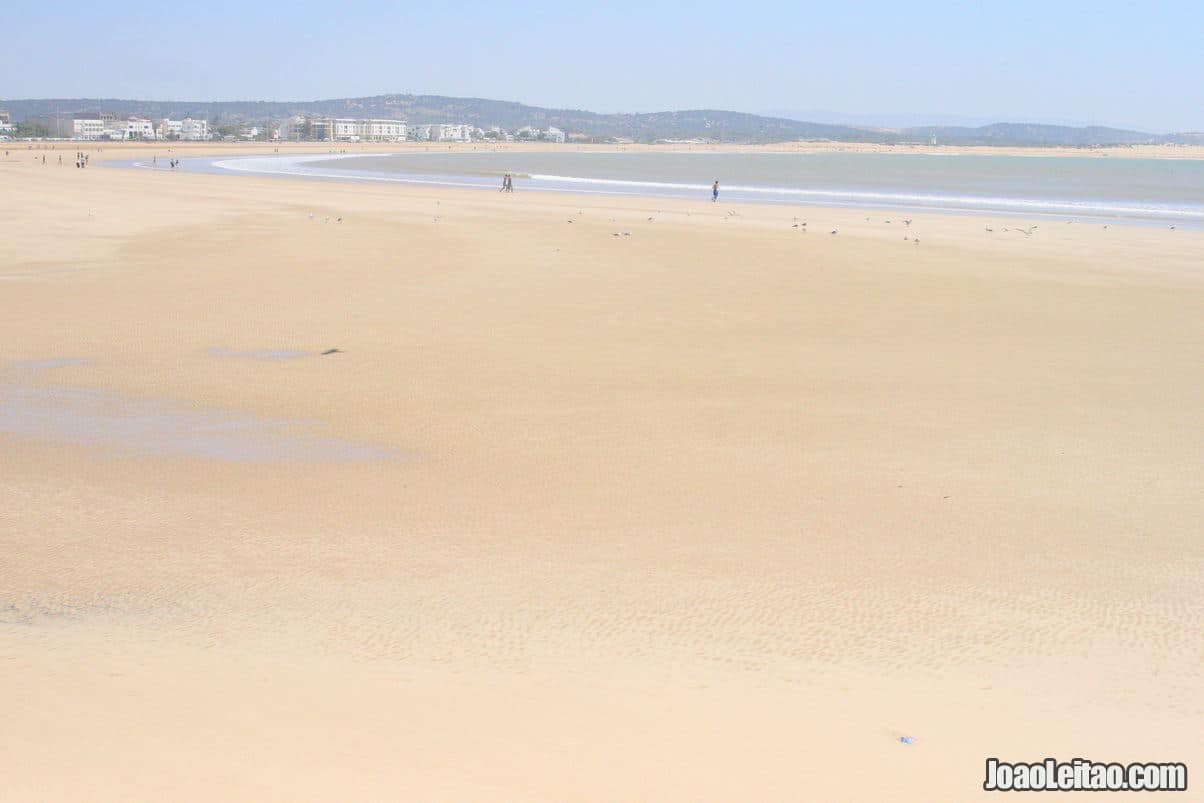
Plage de Safi, a beach on the north side, is more secluded and more difficult to reach. In addition to that, on windy days swimming in the ocean is dangerous and you should avoid it altogether. On the other hand, those conditions make the beach virtually deserted, which is perfect for those who’d like to enjoy the outdoors alone.
The whole coast is windy here, with ideal conditions for water sports like windsurfing or kitesurfing. The northeast winds are constant and especially intense in the summer. On the other hand, the Essaouira bay and the shallow waters by the beach make it a perfect spot for beginners. There’s a considerable number of water sports schools and shops in the city.
7. Bordj el Oued
Visit Bordj el Oued
For hikers, you can leave Essaouira going south through the beach. Make sure you know the tides’ schedules because if you come past a creek that you need to cross, you won’t be able to on high tide. You’ll see the remains of a fort, built by Sultan Sidi Mohammed Ben Abdellah, supposedly on the remains of an ancient lighthouse. The building collapsed in 1856 when the Oued Ksob flooded and affected its foundations.
Bordj el Oued is known as the Castle in the Sand. The Jimi Hendrix song, “Castles Made of Sand,” is said to be inspired by this place but that isn’t true. The song came out in 1967, and Hendrix only visited Essaouira, briefly, in 1969.
From the medina, it’s about 3 km in total each way.
8. Diabat
Visit Diabat
A little further ahead and inward, you can visit the Berber village of Diabat, within walking distance. It used to be a hippie retreat and some claim that Jimi Hendrix and Cat Stevens spent some time here. Today, the atmosphere of Diabat is lost entirely because of the massive golf course built around the village.
9. Mogador Island
Visit Mogador Island
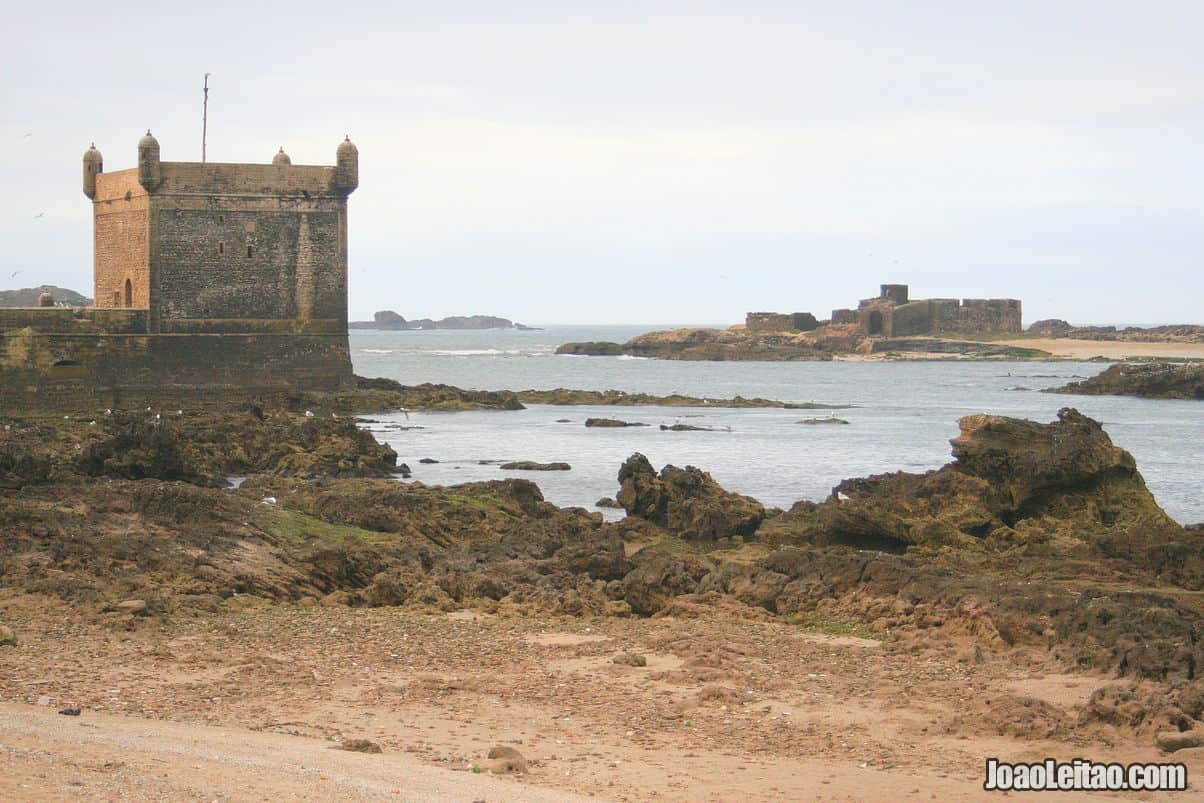
Mogador Island is a few hundred meters from Essaouira, and you can see it from the walls. Technically, you can’t visit without undergoing a lengthy bureaucratic process: first, you’ll need a permit (permit d’autorisation) from the Province, that you can request at Boulevard Mohammed V. Then, you need a license from the Port Captain, whose office is near the Sea Gate that you can’t reach unless the weather conditions are good. Finally, you need to find a fisherman willing to take you to the island. It’s a good idea not to pay him before the return trip.
Is it worth the hassle? Well, what you see on the island is mostly traces of a community that no longer exists. Nowadays, there’s a group of Eleonora’s falcons, mainly active in April and May when they return from the winter in Madagascar. It’s harder to get a permit to visit the island at that time.
The island has six fortresses, most of them built at the end of the 18th century by Sultan Sidi Mohammed ben Abdellah. There are ruins of a mosque and a prison built there in 1897 for members of a rebellious tribe. Later, the prison building was used as a quarantine facility for the pilgrims returning from Mecca that had to stay on the island for 40 days.
Birdwatchers can enjoy a tour around the island at any time, without the need for permits. You can observe different species besides the rare falcons.
Tours in Essaouira
How to get to Essaouira
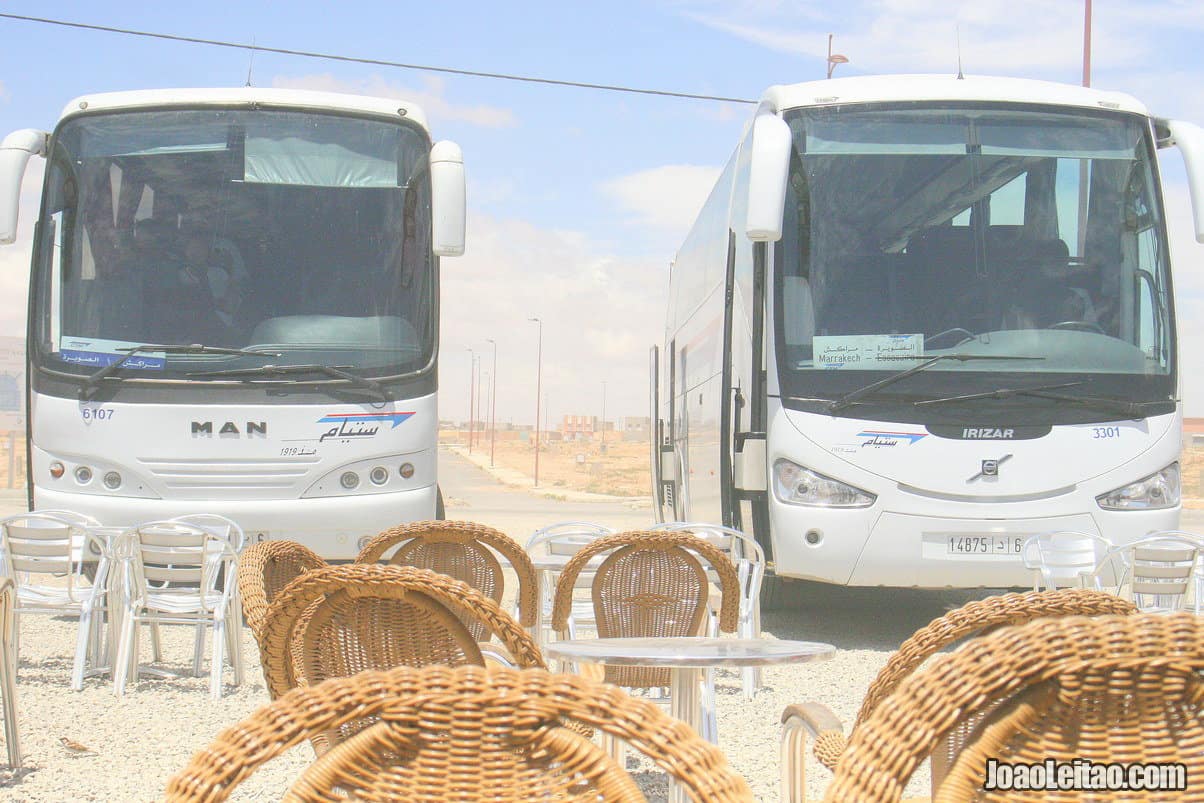
By Plane:
It’s not the most common option, but EasyJet usually operates a regular route from London Luton to the small airport of Essaouira, about 15 km south of the city. It’s not exactly an affordable flight, around 75 Euro (roundtrip) all year long. The airport is about 17 km from the city center, and there’s a bus connection (Lima Bus) every two hours.
By Bus:
This is the most popular way to reach, with daily bus connections from Marrakesh. Supratours is the best option. They have six trips per day, and you must purchase your ticket at their office, right next to the train station in Marrakesh.
The buses depart from a little further away from there, next to the Ibis Hotel. In Essaouira, these buses stop right in front of one of the access gates to the old city. The trip takes about three hours. The tickets cost 7.50 Euros for regular buses and 10 Euros for luxury buses.
If you want something with a more local feel, go to Marrakesh’s central bus station in the suburbs and ask about a bus to Essaouira. They are frequent.
Supratours Bus official website
By Grand Taxi:
Grand taxis are shared cabs that only start the trip once they’re full. You can always negotiate with the driver to leave before that, but that means the passengers need to cover the costs for the empty seats.
A simple seat costs 80 Dirhams from Marrakesh to Essaouira, the same for a regular bus from Supratours. If you want more to rent the whole taxi, expect to pay between 500 and 1,000 Dirhams (it all comes down to your negotiation skills).
Private Transfer:
If you’re willing to invest a bit more and have a relaxed and comfortable trip, you can resort to private transfers. Expect to spend 65 Euros up to four passengers, one way. There are other options for larger groups.
Essaouira Transfer official website
Where to Sleep in Essaouira
Hotels in Essaouira
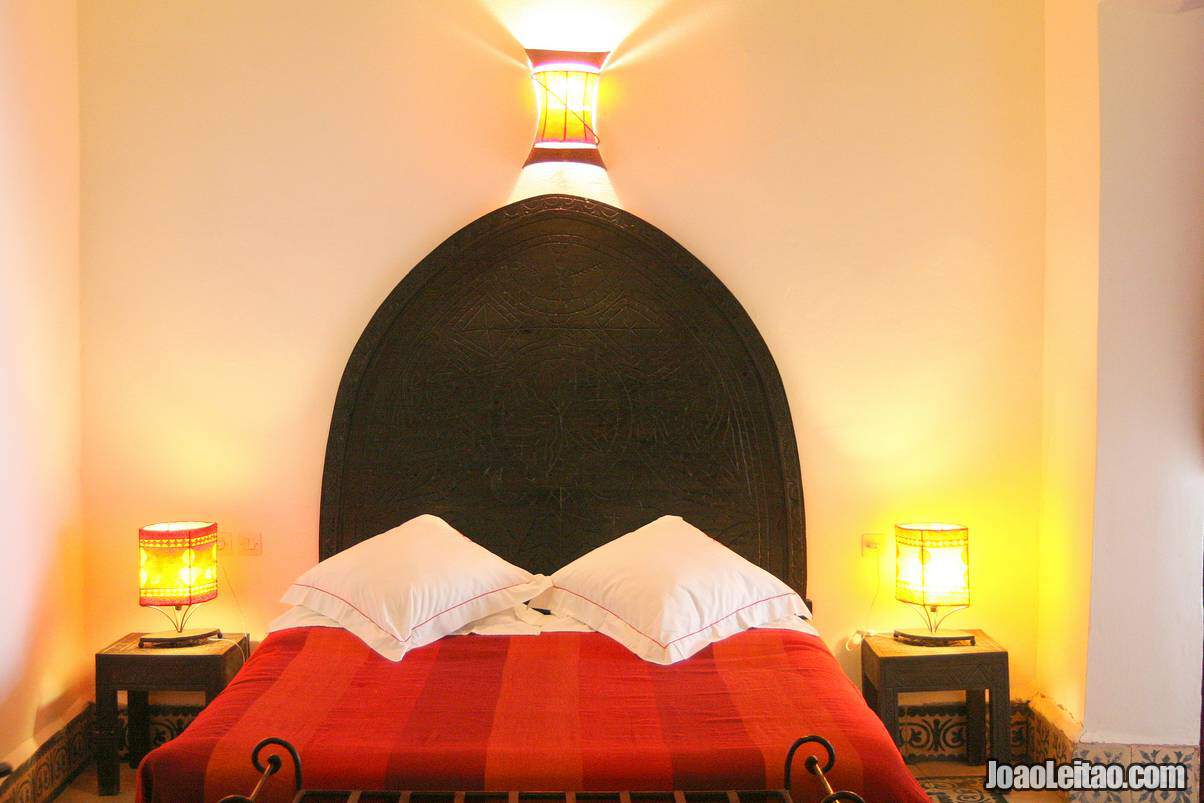
The most complicated part is choosing where to stay in Essaouira. You’ll probably want to stay inside the old city, far from the busy main roads and streets. The more modern hotels are outside the walls because they’re too big for the citadel.
- If you want something modern, choose Hotel Thalassa, a five-star hotel, well-located close to the medina, with rooms from 80 Euros.
- At the old city, Riad Bab Essaouira looks like the perfect option, with affordable prices (sometimes, just 25 Euros) and a quality level above its price range. Breakfast is included, and the terrace is splendid.
- Another good option is the Dar Latigeo, owned by an old French man, Georges, who looks like a well-lived citizen of the world with many stories to tell, and his Moroccan wife Latifa (hence the name of the hotel, LATIfa + GEOrges). The location is perfect, in a calm street right in the center of the medina. The prices are great, starting at 20 Euros, and the breakfast is superb.
Eating in Essaouira
Restaurants in Essaouira
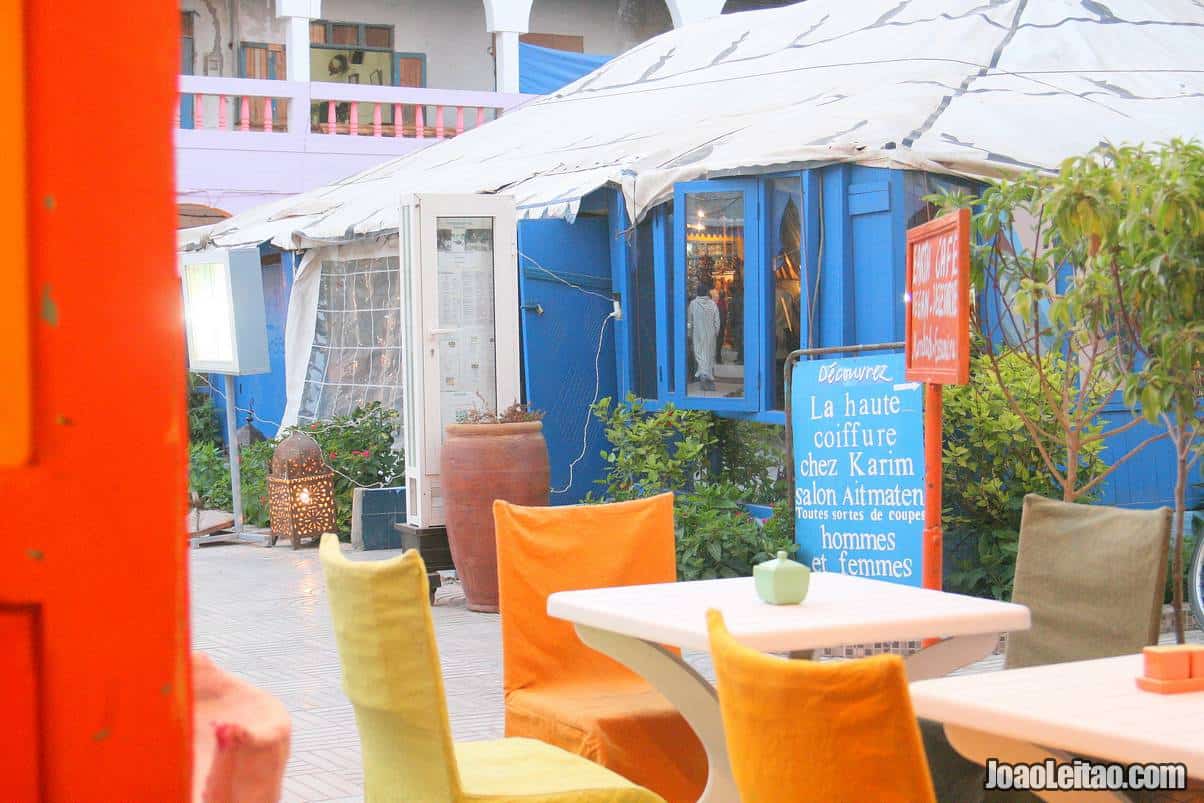
The cuisine here is, of course, Moroccan and you’ll find the country’s most typical dishes: delicious tajines, especially at the small restaurants where locals eat, couscous dishes, and pastilla.
After Agadir and Safi, Essaouira has the third most important fish port in Morocco. Naturally, you’ll find many places with fresh fish and other seafood. There are some restaurants specialized in fish dishes near the port and if you want a place with a more high-end feel, look for the restaurants with ocean views at the beach.
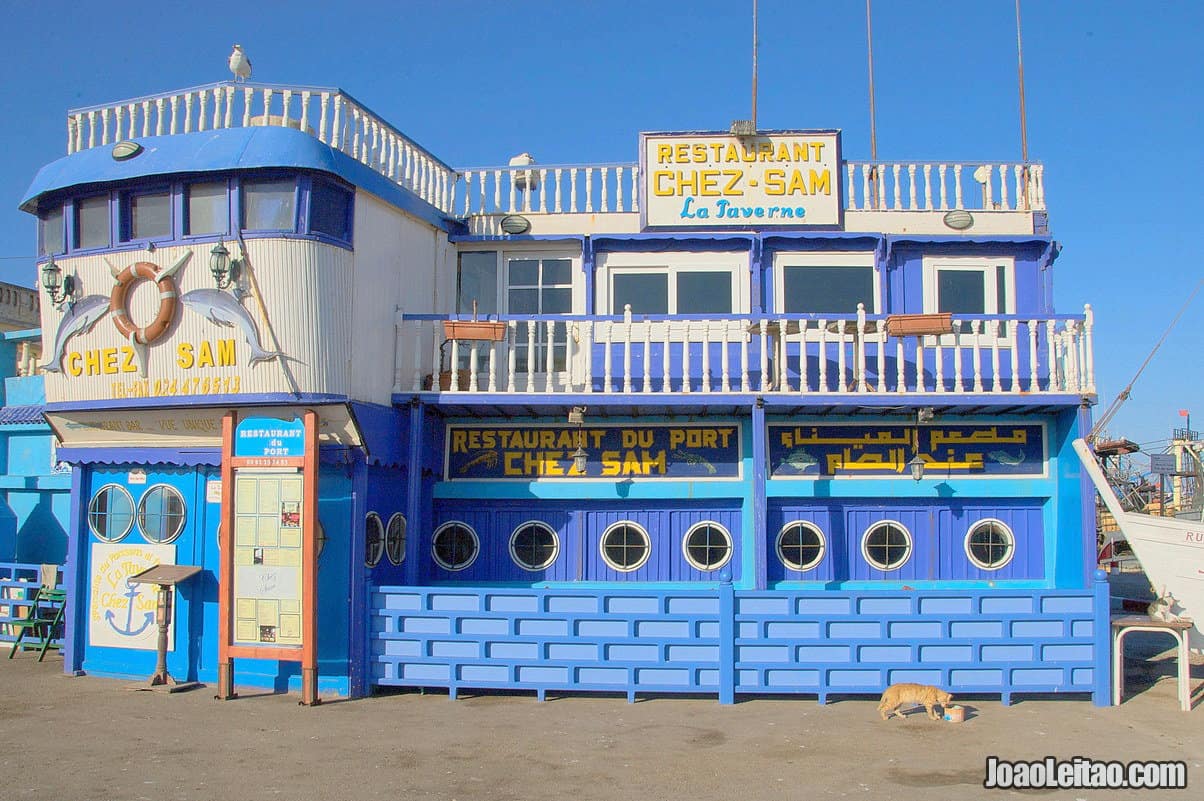
- At the medina, there’s a surprising number of restaurants worth going to. La Maison du Cinéma (14, Rue laalouj) might not serve the most refined dishes but has the interesting concept of screening films at dinner. You can go for just a drink and a movie too.
- For a place with a more elegant atmosphere and high-end cuisine, with prices to match, try La Table by Madada (7 Rue Youssef El Fassi).
- In the average range, the most popular place is Restaurant Adwak (2 Rue de Tetouan), where you can have a nice meal, including fish and vegetarian options, for 100 Dirhams on average. As a bonus, they offer free WiFi to customers, something that’s becoming quite rare in Essaouira.
- If you prefer a completely local environment, there are many interesting small restaurants in the center of the medina, close to La Maison du Cinéma, but due to their nature, it’s hard to give accurate information. Most of them don’t have a website, or an address, or even a name. But those are the places where you can eat authentic Moroccan food, at local prices, and observe the typical neighborhood life. If you need specific directions, find Place Marché de Grains, typically known as the Corn Market, and ask for the Toulaoui Café. It’s a place serving a delicious couscous for lunch, from Tuesday to Friday.
- If this kind of environment is right up your alley, look for one of the Berber cafés on rue el Khabbazine after your meal. Order mint tea or coffee and challenge one of the local champions for a game of checkers.
Nightlife in Essaouira
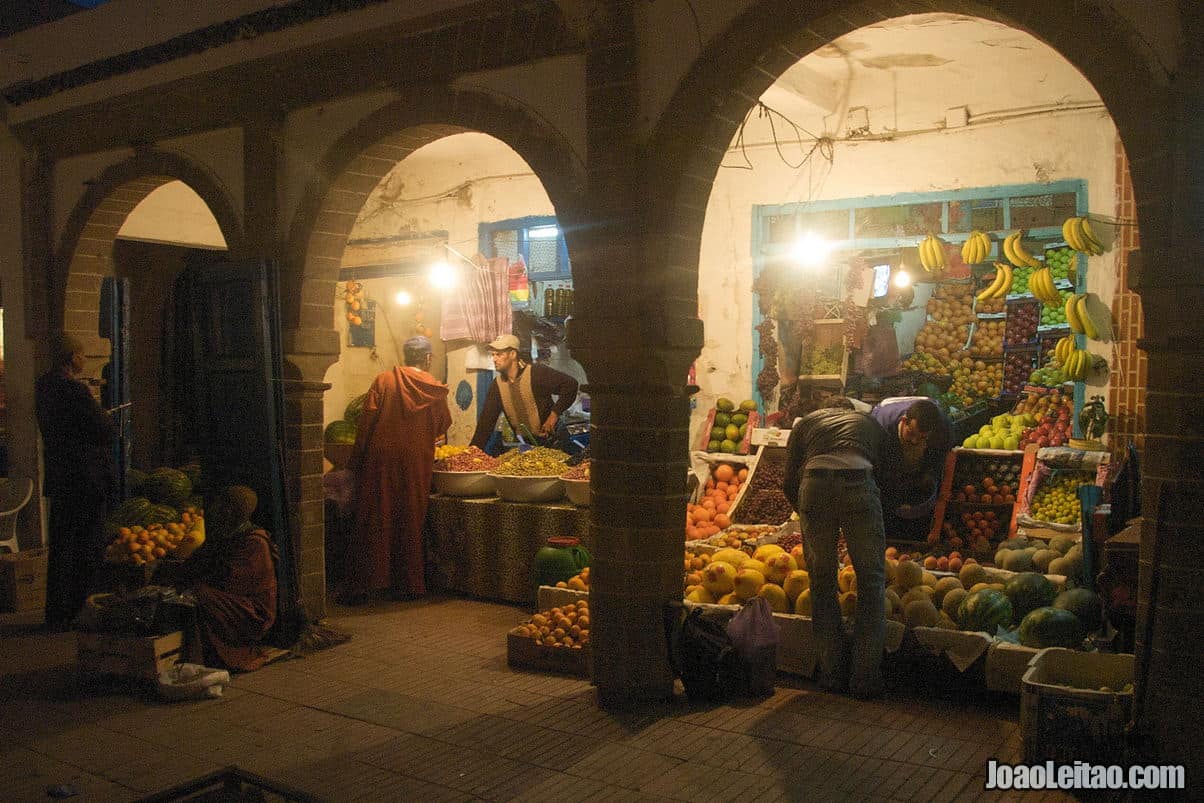
The type of tourist visiting Essaouira is typically less conservative, but despite this, there aren’t many nightlife options in the city. After dark, the city practically fades out with a few people going out to dinner, mainly foreigners. There are a few bars worth visiting after dinner. Taros (open until 11 p.m.; closed on Sundays) is a rooftop bar on 2, Rue de Skala. Around Place Moulay Hassan there’s also a series of rooftop and terrace-top bars in the adjoining buildings.
Some restaurants have a pleasant atmosphere to enjoy after your meal, including these in the medina: Les Chandeliers, La Triskalla, and Restaurant Baraka. The first one has an intimate vibe and a lovely mezzanine where they serve tapas all night. The second one is for the younger crowd, and the third one regularly hosts live music concerts on the weekends.
Currency Exchange in Essaouira
The currency in Morocco is Dirham (MAD). It’s unlikely that you reach Essaouira without Dirhams, but if you need extra funds during your trip, you can use one of the many ATMs in the city. In the medina alone, there are six (three of them at Place Moulay Hassan).
The exchange fee at ATMs is usually better, and it’s worth paying for that withdraw charge because it’s faster and more practical. But if you prefer to exchange currency, you can go to any bank or the currency exchange office at Avenue de L’Istiqlal. There’s another one on rue de Skala, Essaouira Change, but it has a lot of negative reviews about the business’s honesty.
Tip: allegedly, it’s mandatory to show a cash withdrawal ticket or an exchange receipt when you want to exchange the Dirhams you have extra for your local currency. It’s true that no one has actually seen the enforcement of this rule, but it’s best to be safe than sorry.
Read my pages:
Visit Marrakesh – Morocco: 3-day Travel Guide to the Red City
Visit Fez – Morocco: 2-day Travel Guide to the Mecca of the West
Visit Chefchaouen: 2-day Travel Guide to the blue city of Morocco

